Jun
19
A review of Wednesday, June 16, 2010

The view from our train as we left Machu Picchu Town
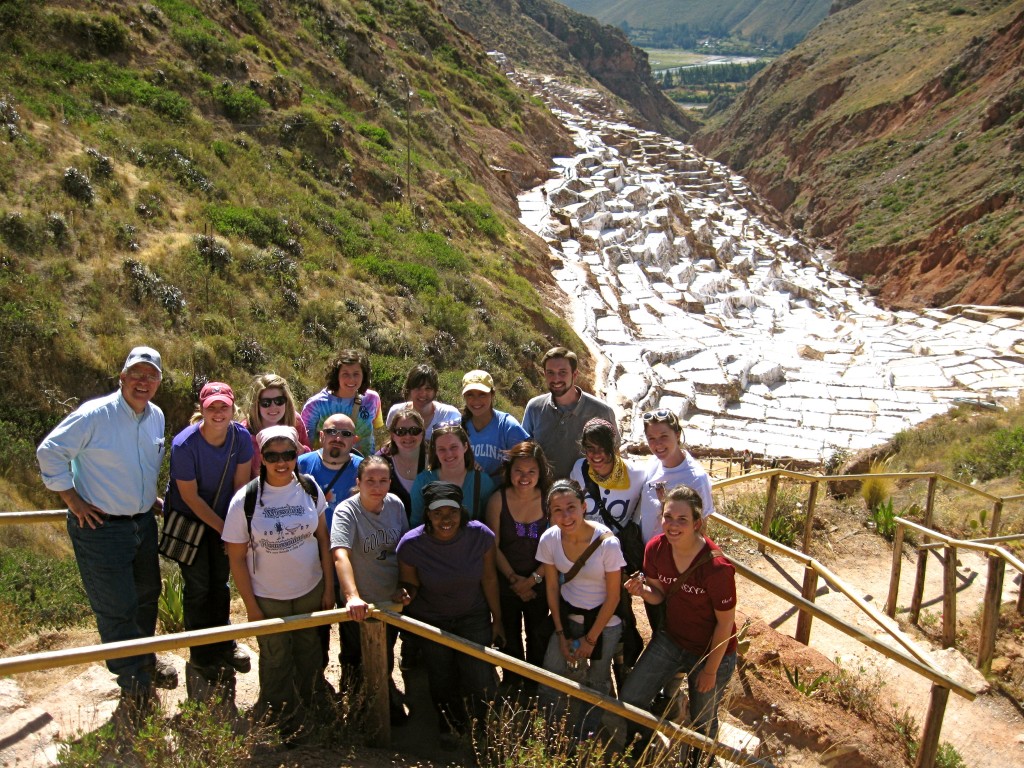
OU Journey to Latin America students stopped by a salt mine on the way to Moray.

Here I am at Moray, the Incas' research field.
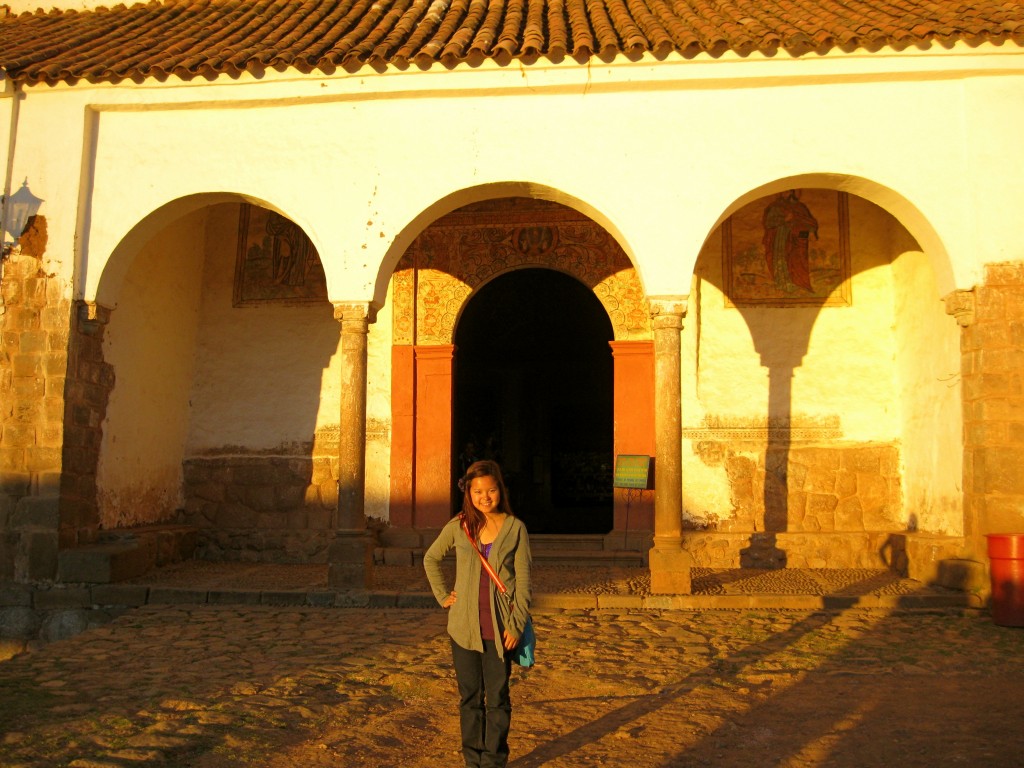
Chinchero Catholic Church in Chinchero, Peru
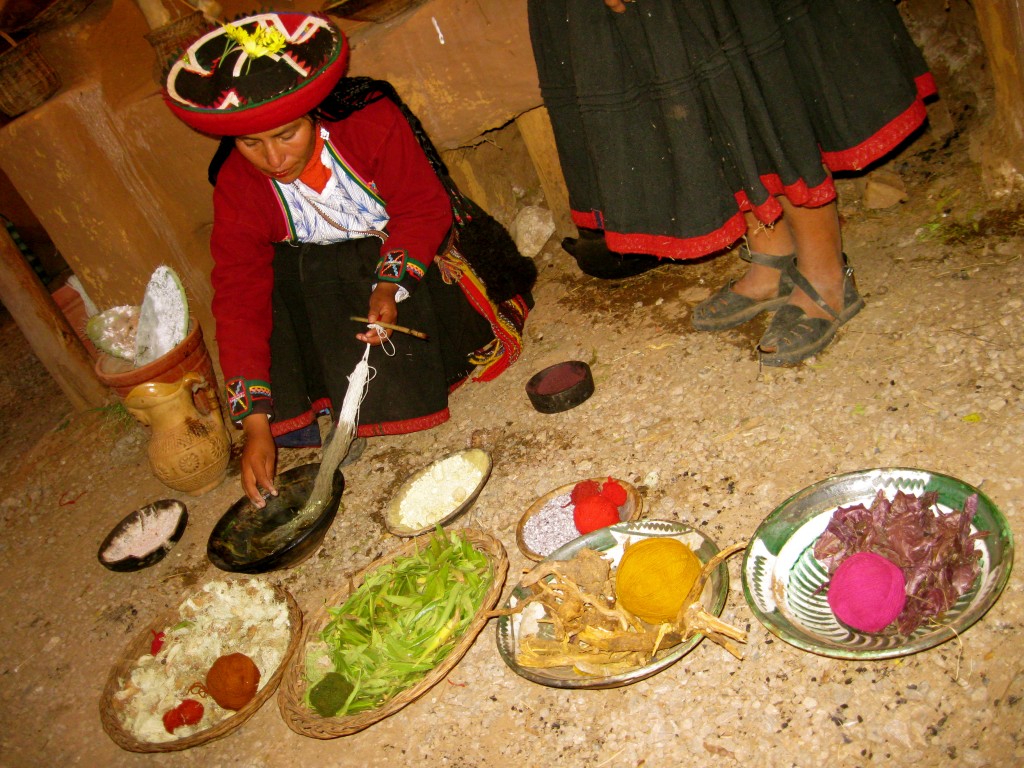
This textile factory in Chinchero was slightly different than the one in Patacancha because it was bigger. One of the leaders of the textile factory spoke Spanish, Quechua and English. The women gave us a full demonstration of how each color of dye is made. They also served us tea and demonstrated weaving techniques.

We all enjoyed our meals and had a great time conversing and getting to know each other at our first dinner in Cuzco.
I had WiFi for the first time in four days, but it didn’t work for me to post any blogs!
The past few days have been crazy dragging around luggage, hiking everywhere and staying in different towns every night.
We visited four towns today, but we are settled in Cuzco for the next four days!
We traveled from Machu Picchu town to Ollantaytambo to Chinchero to Cuzco, stopping at a salt mine, Moray (the Incans’ research field), Chinchero town and church and an indigenous textile factory. So much fun in one day!
This textile factory in Chinchero was slightly different than the one in Patacancha because it was bigger. One of the leaders of the textile factory spoke Spanish, Quechua and English. The women gave us a full demonstration of how each color of dye is made. They also served us tea and demonstrated weaving techniques.
We all bought many textile items from this factory because there were more vendors and items for sale.
We arrived at our hotel in Cuzco, Casa Campesina (“the peasants’ home”) around 8 p.m. We then unloaded our stuff and walked around Cuzco looking for dinner.
We returned from dinner around 11 p.m. As fun as Peru is, customer service is not so great. It’s usually very slow with misunderstanding partly due to language issues.
For example, Jenny and Ravae asked for free pisco sours that came with our dinners. Ravae asked the server three times if the pisco she was ordering is free because that’s all she wanted, and the server said “yes.” The server came back with free pisco sours and two other pisco sours for Ravae and Jenny. Señora Marchand, Dr. Kenney’s wife, explained to the server that the girls only wanted the free drinks, but the server got mad and stormed off.
The server later came back and said she could not take the drinks back because they were ordered and would be charged. Señora Marchand made a compromise: the server took one of the drinks back, and the girls paid for the other.
I found this situation interesting because I have never seen this happen in the United States. I have worked as a server, and I have never acted this way toward customers. We always treated the customers as if they are always right. I never asked the customer to pay for something if there was a misunderstanding, and managers often apologize and give the item to the customer.
In the end, we all enjoyed our meals and had a great time conversing and getting to know each other.
We also left good tips so that the server had enough money to pay for the other pisco sour.
Dr. Kenney likes to joke with us. I’d like to leave this blog entry with a quote from him:
“Let’s leave while Chinh’s in the restroom. She’ll be a lost Hello Kitty. Cats don’t have very big brains, do they?”
My professor is picking on me while abroad, but at least he’s comparing me to my happy little bow-wearing friend, Hello Kitty!
Plus, we all know Hello Kitty and I are very intelligent. 🙂
Jun
19
A review of Tuesday, June 15, 2010
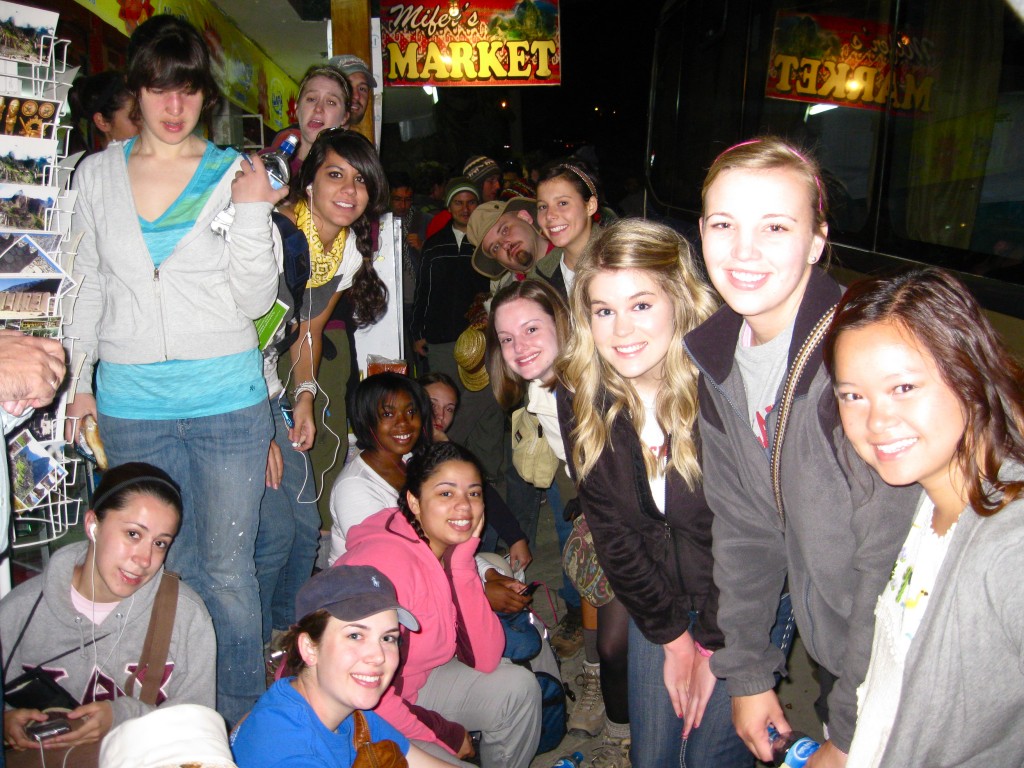
I woke up at 3:30 a.m. to get ready for our big day in Machu Picchu town. We met in the lobby of the Andina Hotel at 4:30 to walk to the bus stop. We all waited at the bus stop until about 6 a.m. when we were allowed to board the bus that would take us to Machu Picchu.

It was amazing to see Machu Picchu early in the morning before everyone else. We also saw the sunrise.

I’m so glad I pushed myself to climb Wayna Picchu even though I am scared of heights and even though it was physically exhausting. I'm also proud of all my traveling buddies for climbing to the top! We all helped each other climb to the top by encouraging and waiting for each other.
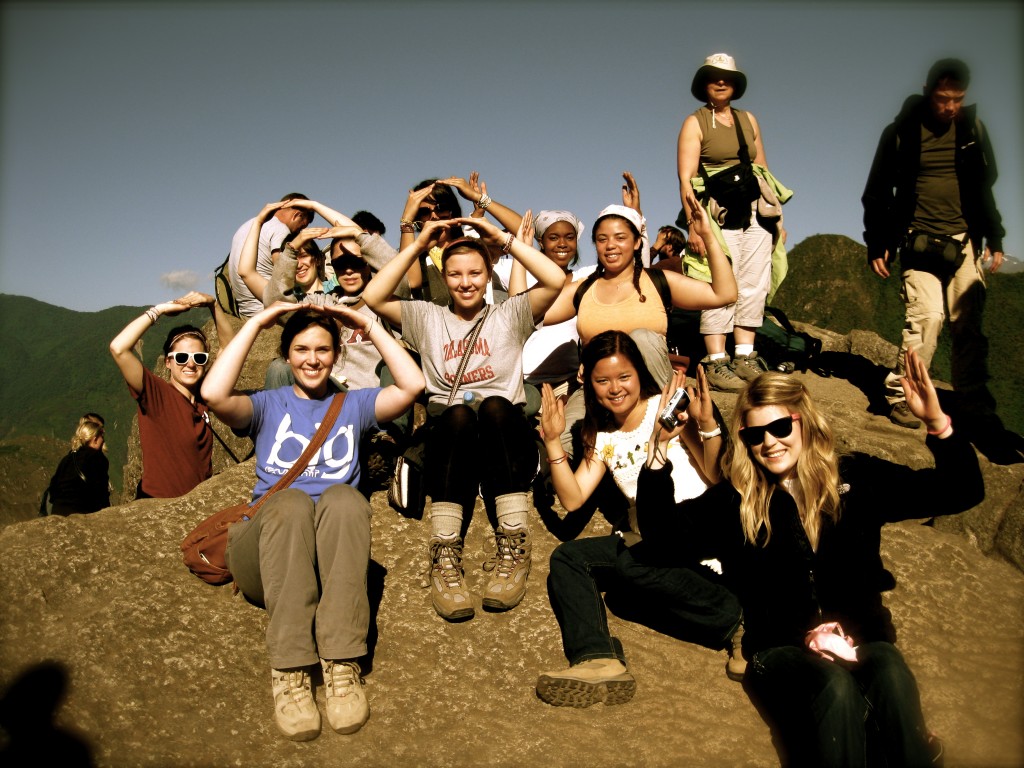
It took me about 45 minutes, the average time, to climb to the top of Wayna Picchu. I spent about 45 minutes on top of Wayna Picchu relaxing, taking pictures and absorbing it all in. Boomer Sooner!

I met two Tri Delta sisters from Baylor and Emery, so of course we threw up the Delta in the Inca ruins! Here I am with Laura, a graduate of Baylor University.

After eating and catching our breath, we walked around Machu Picchu for about 2 hours!

There are few things like seeing the sun come up at Machu Picchu and later enjoying the sunshine after a long hike up a mountain.
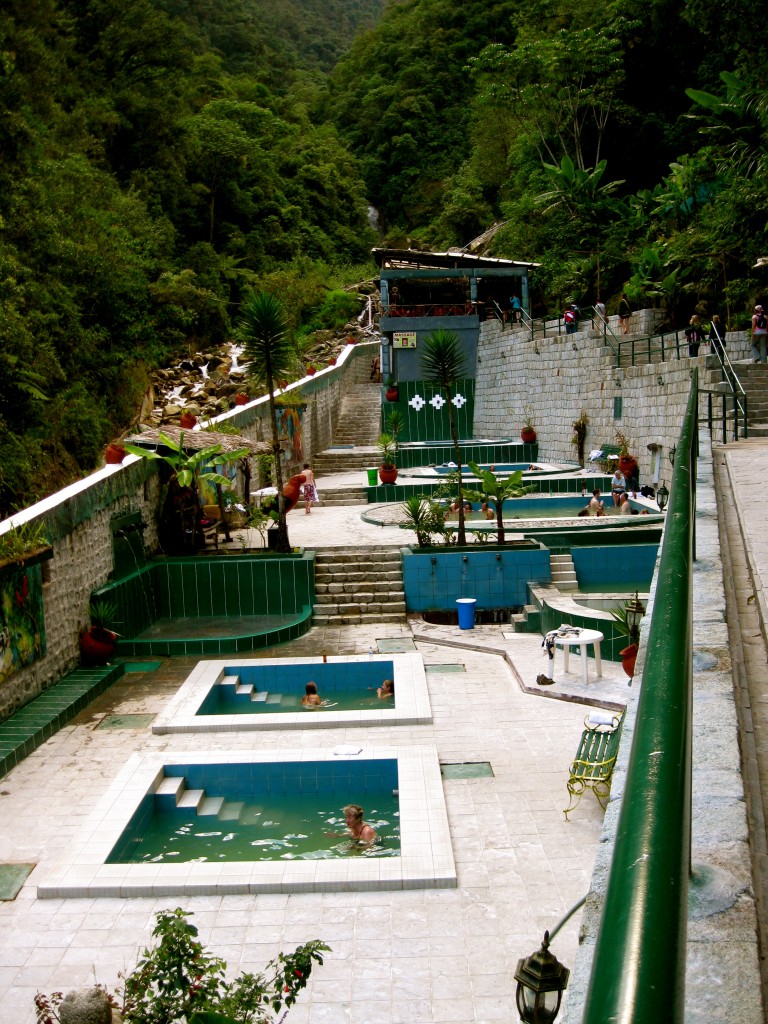
After all the Wayna Picchu and Machu Picchu fun, Rafael and his wife showed us to the “baños termales,” hot baths in Machu Picchu town, also known as Aguas Calientes.

Our interesting dinner experience that lasted about 3 hours from taking our orders to paying for the meals.
I woke up at 3:30 a.m. to get ready for our big day in Machu Picchu town. We met in the lobby of the Andina Hotel at 4:30 to walk to the bus stop.
We all waited at the bus stop until about 6 a.m. when we were allowed to board the bus that would take us to Machu Picchu. When we got to the Machu Picchu site, it was still dark, and we waited in line to show our ticket and ID. Only 400 (200 for the earlier shift, and 200 for the later shift) people are allowed to climb Wayna Picchu. When we got our stamps for Wayna Picchu, we were about the 100th, but we were about the 10th people that day to climb because some people in front of us waited later to climb.
The climb was beautiful because the sun was rising, but it was one of the hardest, most physical things I’ve done in college. I played volleyball and tennis in high school, but I haven’t been working out. I also haven’t climbed a mountain.
It took me about 45 minutes, the average time, to climb to the top of Wayna Picchu. I spent about 45 minutes on top of Wayna Picchu relaxing, taking pictures and absorbing it all in.
I’m so glad I pushed myself to climb Wayna Picchu even though I am scared of heights and even though it was physically exhausting. I’m also proud of all my traveling buddies for climbing to the top! We all helped each other climb to the top by encouraging and waiting for each other.
Rafael carried some of the girls’ things because they were getting heavy. He stayed at the back of the trail to make sure everyone was safe.
Our tour guide, Saúl, has climbed Wayna Picchu about 15 times. His fastest time is 9 minutes. I’d like to think he’s this quick because he’s a descendent of the Incas. 😀
We all took a lunch break at the café at the entrance of Machu Picchu. The food prices were outrageous since tourists are more likely willing to pay high prices. For example, a bottle of water cost 8 soles when it normally costs about 2 soles in a neighborhood store. I ordered a chicken sandwich combo that included passion fruit juice and soft-serve ice cream. YUM!
After eating and catching our breath, we walked around Machu Picchu for about 2 hours! There are few things like seeing the sun come up at Machu Picchu and later enjoying the sunshine after a long hike up a mountain.
I met two Tri Delta sisters from Baylor and Emery, so of course we threw up the Delta in the Inca ruins!
After all the Wayna Picchu and Machu Picchu fun, Rafael and his wife showed us to the “baños termales,” hot baths in Machu Picchu town, also known as Aguas Calientes.
I was not very impressed with the hot baths because I pictured more natural thermal hot springs. This was more like giant man-made Jacuzzis. I’m still glad I went to know what it was like.
Jenny, Andy and I left the hot baths early to walk around Machu Picchu town. Andy and Jenny used an Internet café while I wrote postcards.
I mailed the postcards, then Jenny and I explore the Machu Picchu market and walked around the neighborhood.
We all met later that night to have dinner. The dinner experience was something different. The man at the front of the restaurant told us we could order anything off the menu for 20 soles with drink (Pisco sour, lemonade or tea) included. We made sure he was telling the truth because we fell for “free drinks” before in Lima.
The food was tasty for the most part, and the man kept his promise, but it took us about an hour to get our free drinks and water. Then it took about another hour to get our food.
The most absurd part of dinner was that the restaurant only had one young lady working as cook, cashier and hostess while the man continued to stand at the entrance asking people to come in. It was obvious this restaurant could not handle more customers.
The hostess/cook/cashier came in and out of the restaurant several times carrying groceries after she took our order. It was as if the restaurant didn’t have the ingredients even though they invited us in and took our orders.
The most frustrating part was that the hostess said we couldn’t pay separately although she said we could at the beginning. After she understood that we couldn’t pay unless we paid separately, she asked us all to write down what we ate because she couldn’t remember. I’m not sure why this mattered when everyone’s meals cost 20 soles as promised.
After we wrote our meals down on torn pieces of paper, she said she had to go next door to swipe the charge cards. Why did she have to use another business’ charge machine when the man said the restaurant accepts charge cards, and the entrance displayed Visa signs?
After about 30 minutes of waiting for our cards, change and receipts, a child came into the restaurant holding Ashley’s debit card. This frustrated Ashley because the young girl was running around with her only source of money. What if the young girl lost the debit card?
Because the charge machine next door had so much trouble, everyone borrowed money from each other to pay in cash. The young lady then said everyone’s meals cost 22 soles instead of 20 soles because tax was not included.
The dinner lasted about 3 hours from taking our orders to paying for the meals.
After that fiasco, we all returned to our hotels to sleep.
Jun
19
A review of Monday, June 14, 2010
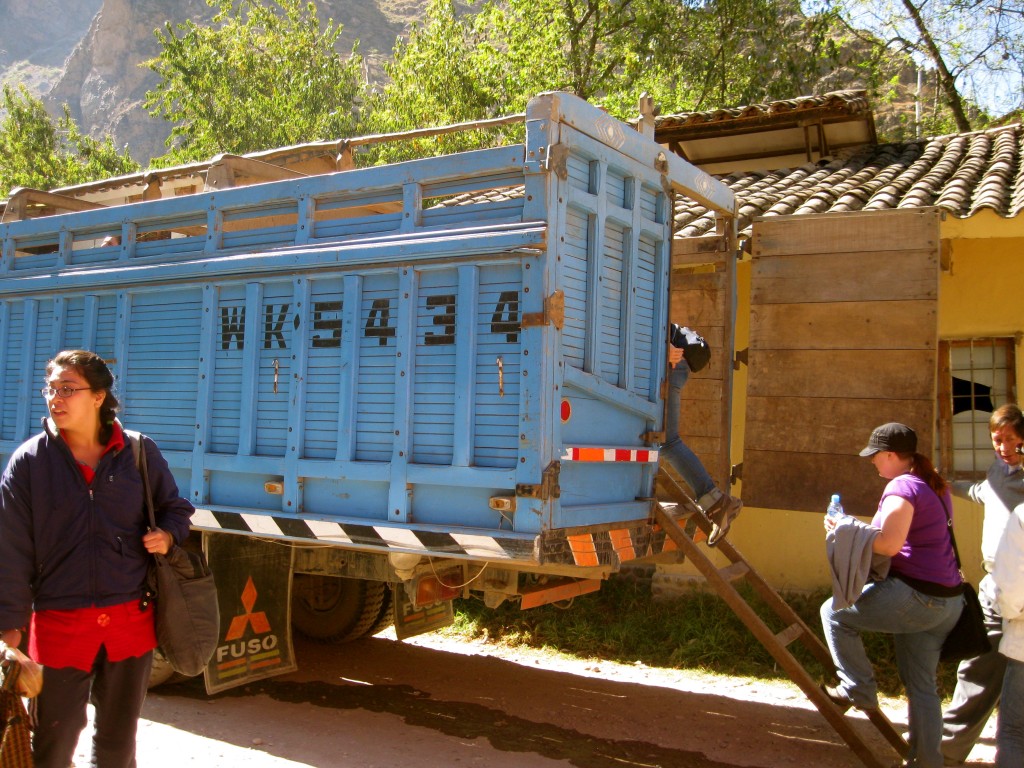
My favorite part the past few days: 17 OU students, two OU professors, a tour guide and two workers from a textile factory riding up a mountain in a cattle truck on narrow, dusty roads chasing cows, sheep and whatever in our way. Oh, and picking up other tourists and indigenous people on the way.

It was especially fun because I sat on the top of the cattle truck on the way there and back, so I saw different views. What a fun 2-hour ride!
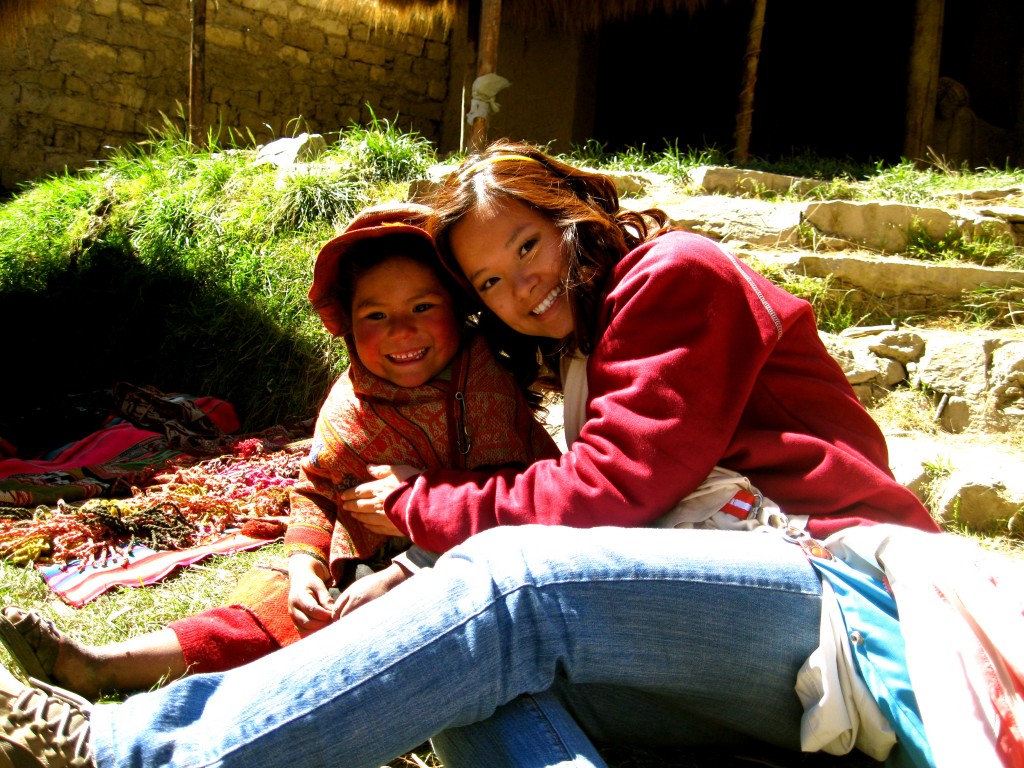
I played with the children at the Patacancha textile factory, particularly a 3-year-old girl who was very happy and giggly.
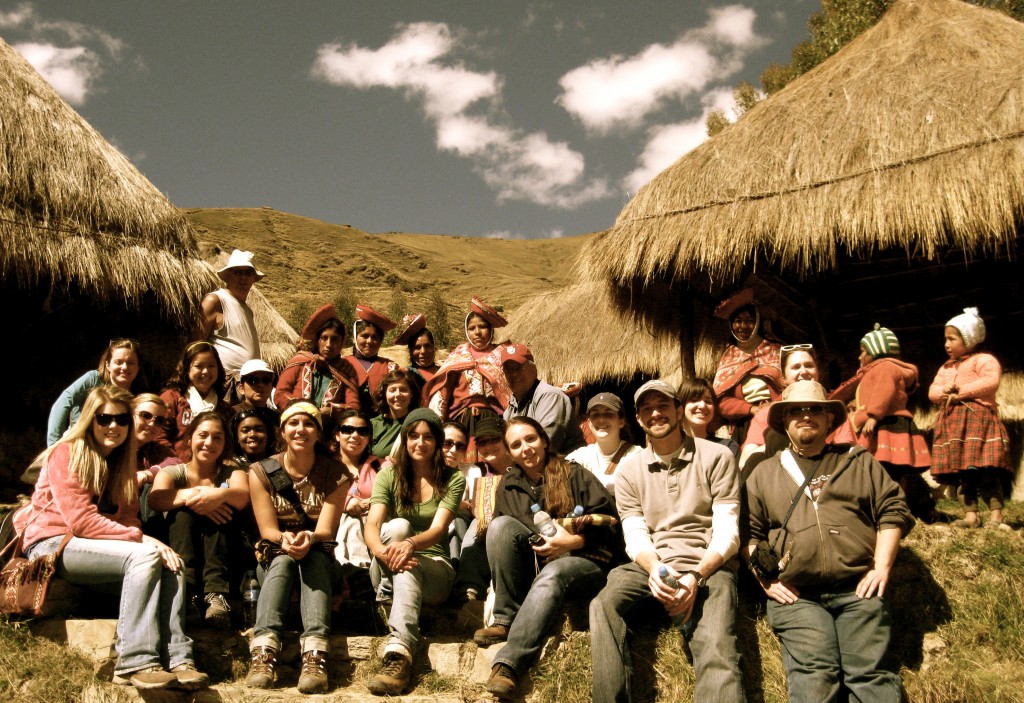
There were about five children with their mothers at the textile factory, which consists of huts. The only man in the factory spoke Quechua and Spanish. He helped prepare the spool so the women could make products out of it.
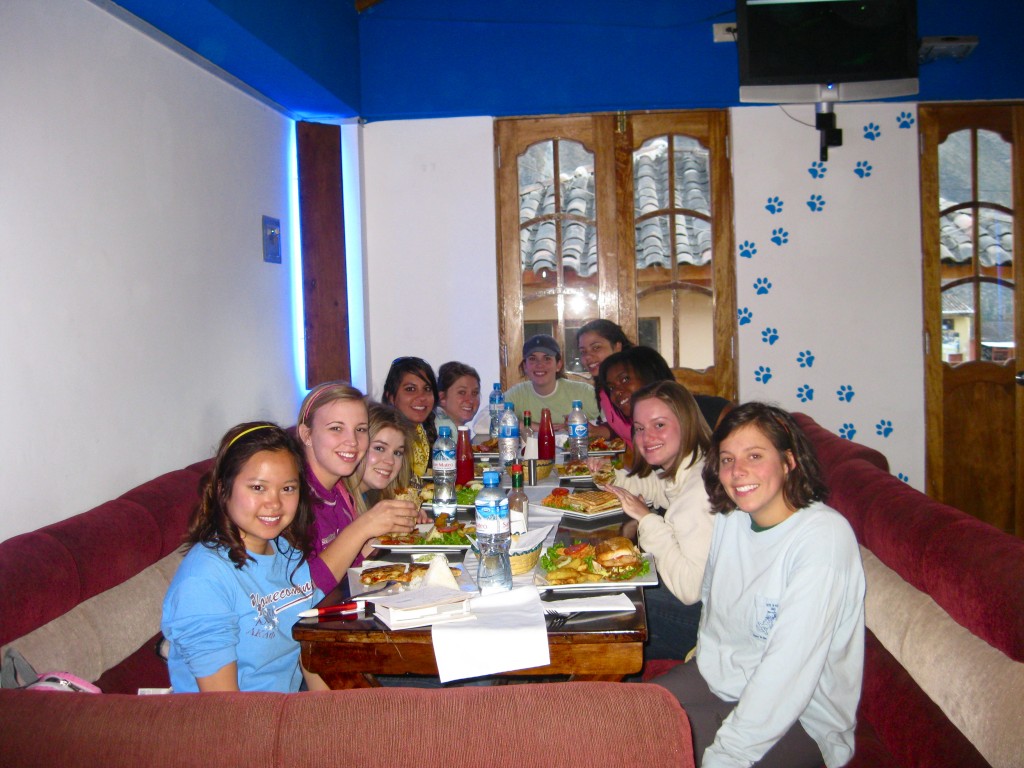
We returned to Ollantaytambo town. Most of us ate at a restaurant called Blue Puppy. I had shrimp quesadilla, one of the few Mexican food options I have seen here in Peru.
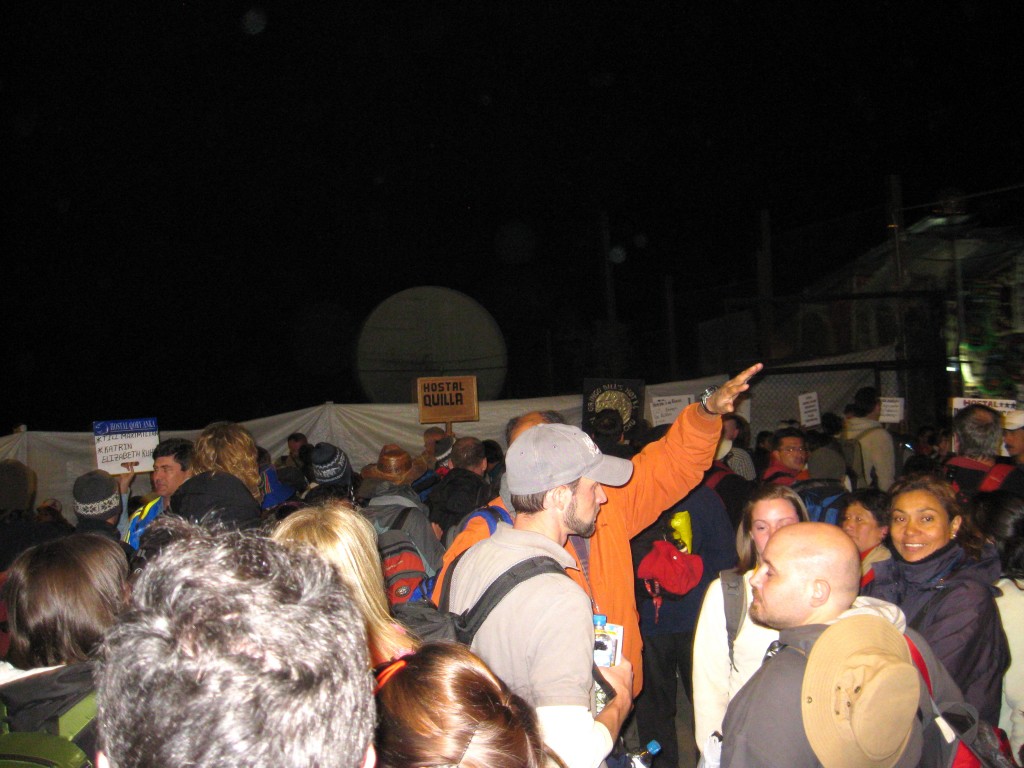
After a hike, a bus ride and a train ride, we made it to Machu Picchu town. Then we divided up into two groups, walked to our hotels and rested for the big day.
Today was very exciting!
My favorite part the past few days: 17 OU students, two OU professors, a tour guide and two workers from a textile factory riding up a mountain in a cattle truck on narrow, dusty roads chasing cows, sheep and whatever in our way. Oh, and picking up other tourists and indigenous people on the way.
It was especially fun because I sat on the top of the cattle truck on the way there and back, so I saw different views. What a fun 2-hour ride!
The director of the textile factory, Emma, is from Great Britain. She’s in her 20s, and she was helpful and welcoming.
I had a great time learning about Patacancha town and the textile factory. Patacancha, consisting of 473 members, is in the mountains of Ollantaytambo town.
There were about five children with their mothers at the textile factory, which consists of huts. The only man in the factory spoke Quechua and Spanish. He helped prepare the spool so the women could make products out of it. I played with the children, particularly a 3-year-old girl who was very happy and giggly.
The women showed us how to dye the wool and how to make different textiles. We later had the opportunity to buy their products.
The non-profit organization that runs the textile factory prepared bagged lunches for us, and the Andean women cooked us potatoes. I gave one of my sandwiches to the 3-year-old girl, and she quickly ate it. I gave an apple to a younger boy. I took a bite of the potato and found a worm in it. I didn’t eat any potatoes after that.
The area doesn’t have indoor plumbing, so our restrooms consisted of bushes. My small bladder forced me to use the “natural restrooms” twice, but I had traveling companions to accompany me…talk about bonding.
We walked further up the mountains and had a great view of Patacancha town and saw the school and soccer field.
We returned to Ollantaytambo town. Most of us ate at a restaurant called Blue Puppy. I had shrimp quesadilla, one of the few Mexican food options I have seen here in Peru, and later mailed six postcards.
Each stamp costs 5.50 soles (about $2). I printed about 40 address labels for postcards before leaving for the trip, but I won’t be mailing that many after finding out how much each stamp costs. The man told me it takes about 10 days to get to the United States.
We took the luggage we would need for the next few days and hiked to the bus station that would take us to the train station for Machu Picchu. After a hike, a bus ride and a train ride, we made it to Machu Picchu town. Then we divided up into two hotels, walked to our hotels and rested for the big day.
Jun
17
A review of Sunday, June 13, 2010
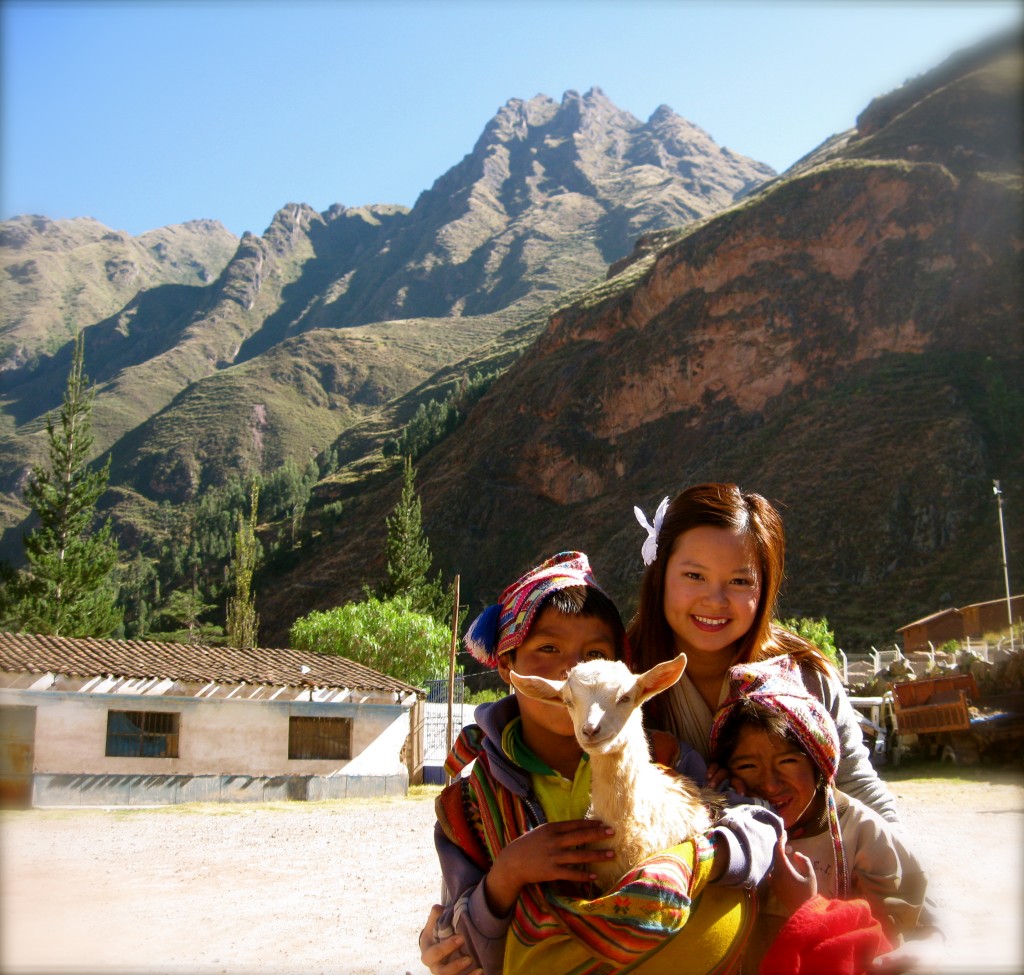
Almost everything costs money around tourist areas. I took a picture of two Andean boys (perhaps brothers) and their pet goat, and that cost me one sole each (about $0.40 each), but I did not mind paying. Maybe this is how the boys’ family pays for their schooling.
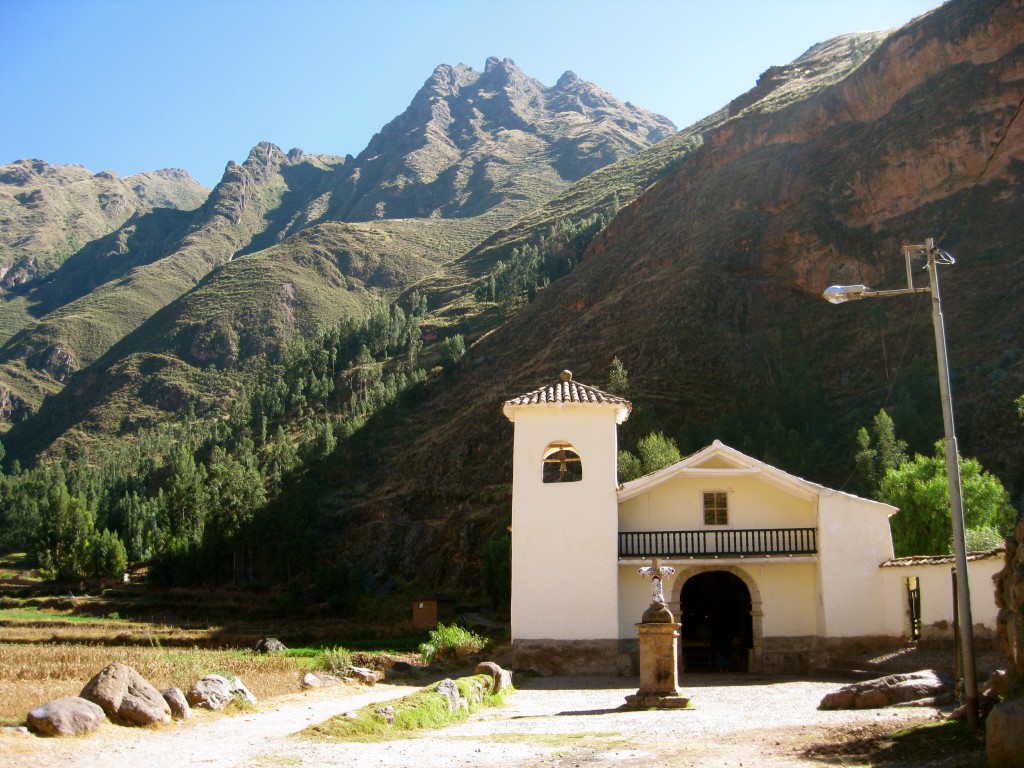
Lori, Rafael (our tour guide) and I found a small church down the street from the Pisac market for Mass. It was perfect for me because it was children’s Mass.
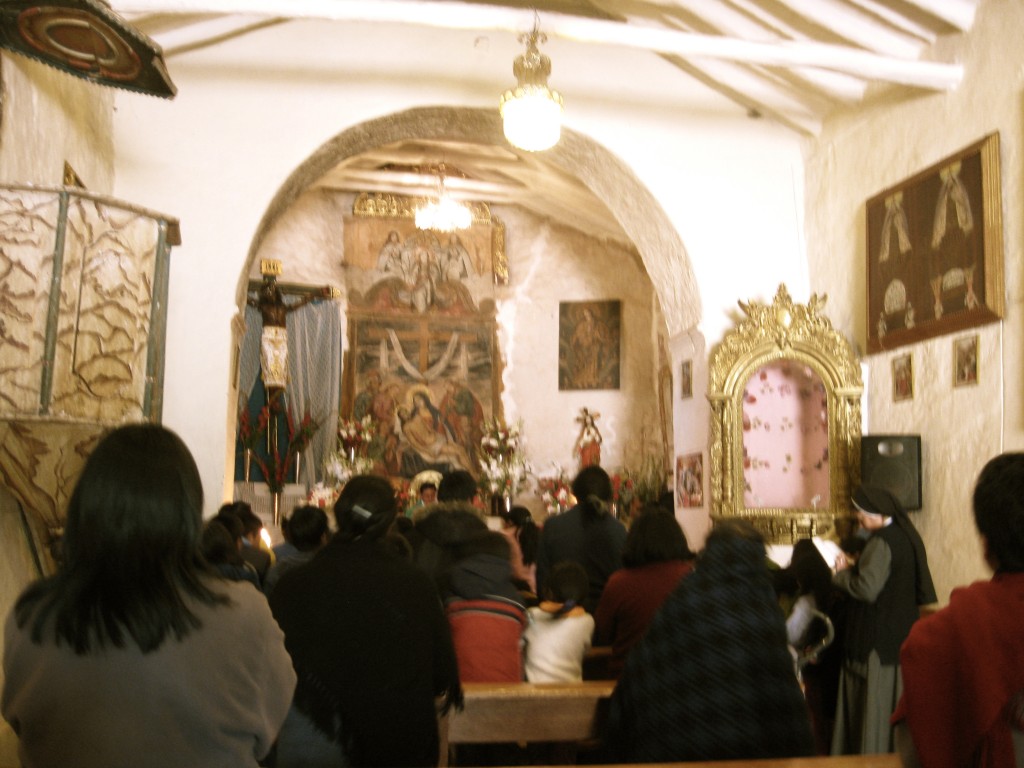
The majority of the congregation was children, but there was also a nun and three senior citizens. I have a big place in my heart for children and the elderly.

The three senior citizen women were physically weak and fragile. They could barely walk, and they were very skinny. All three had matching blue and black blankets that they used as covers for the cold.
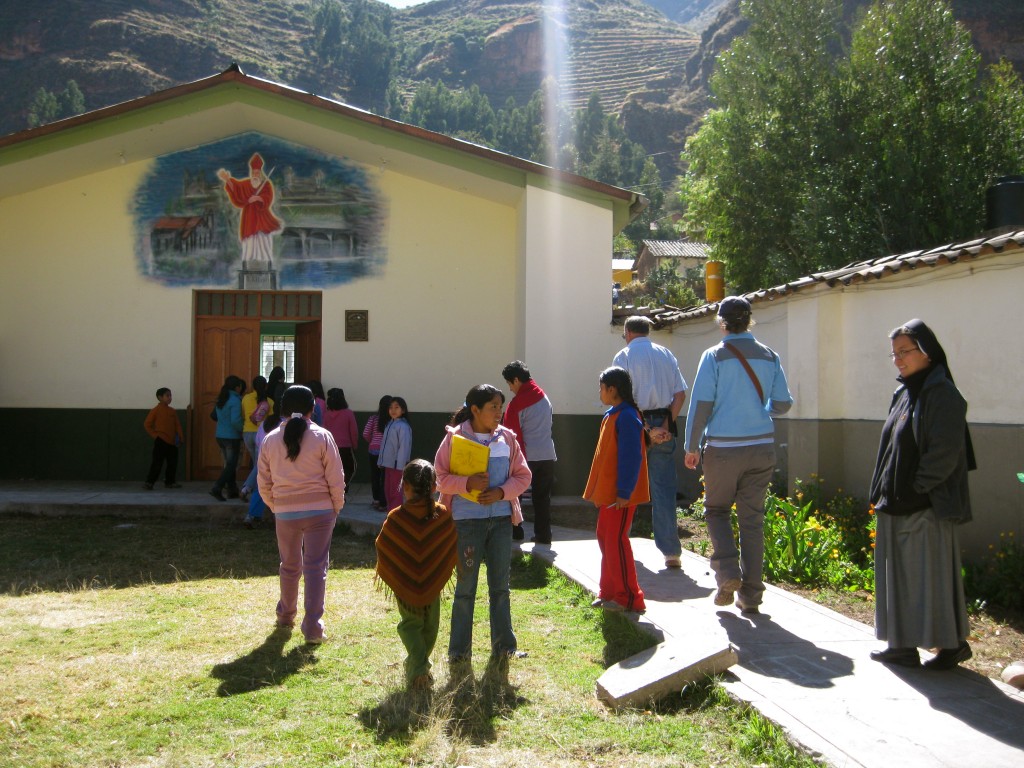
After mass, Rafael, Lori and I followed the nun and children to the “Comedor San Kilian,” St. Kilian church center and dining hall. Children of poorer families are able to go to Sunday school, confirmation class and eat here. This made my day!
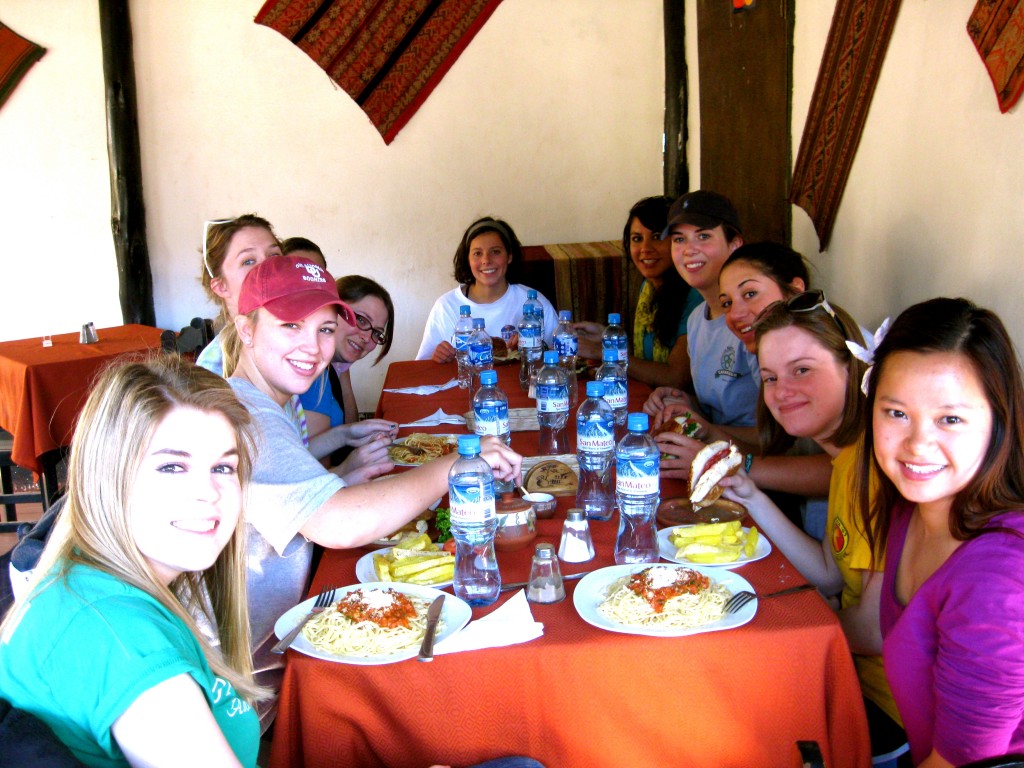
We ate a quick lunch on our own as soon as we arrived in Ollantaythambo at Pachacamac Pizzeria. I had “spaghetti napoleon,” which tasted like regular spaghetti, but with fresh sauce, parsley and mushrooms. We had to eat our food in 15 minutes.
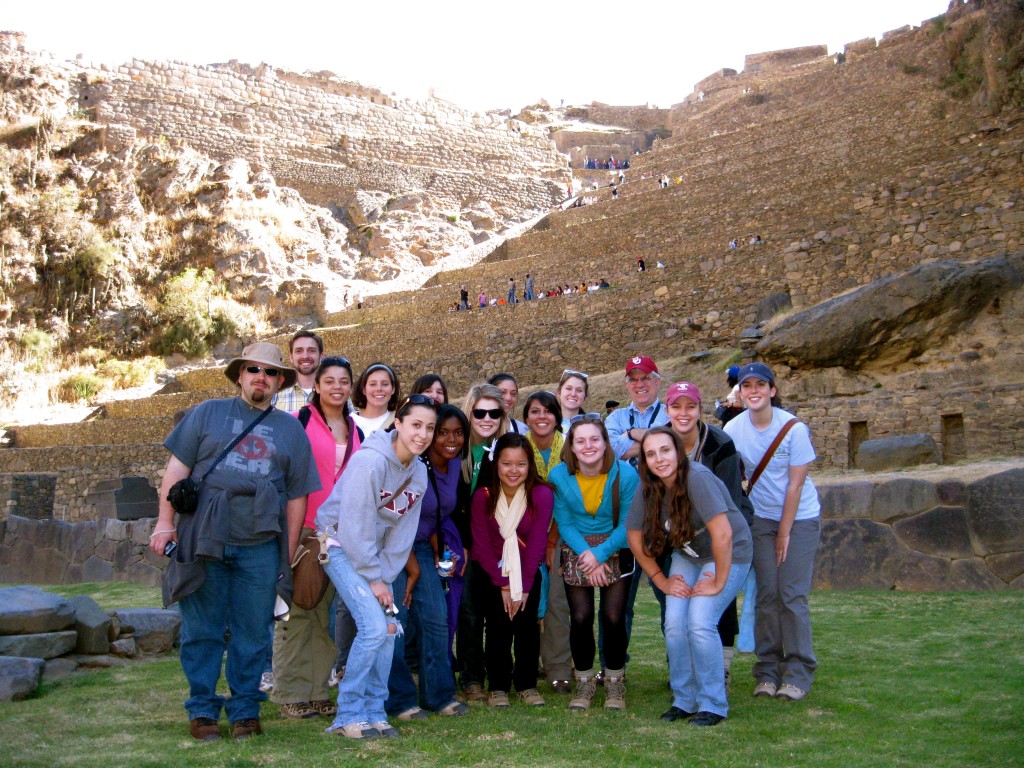
After quickly inhaling our food, we met up with the rest of OU Journey to Latin America members to hike up the Ollantaytambo ruins, the second ruins of the Incans.
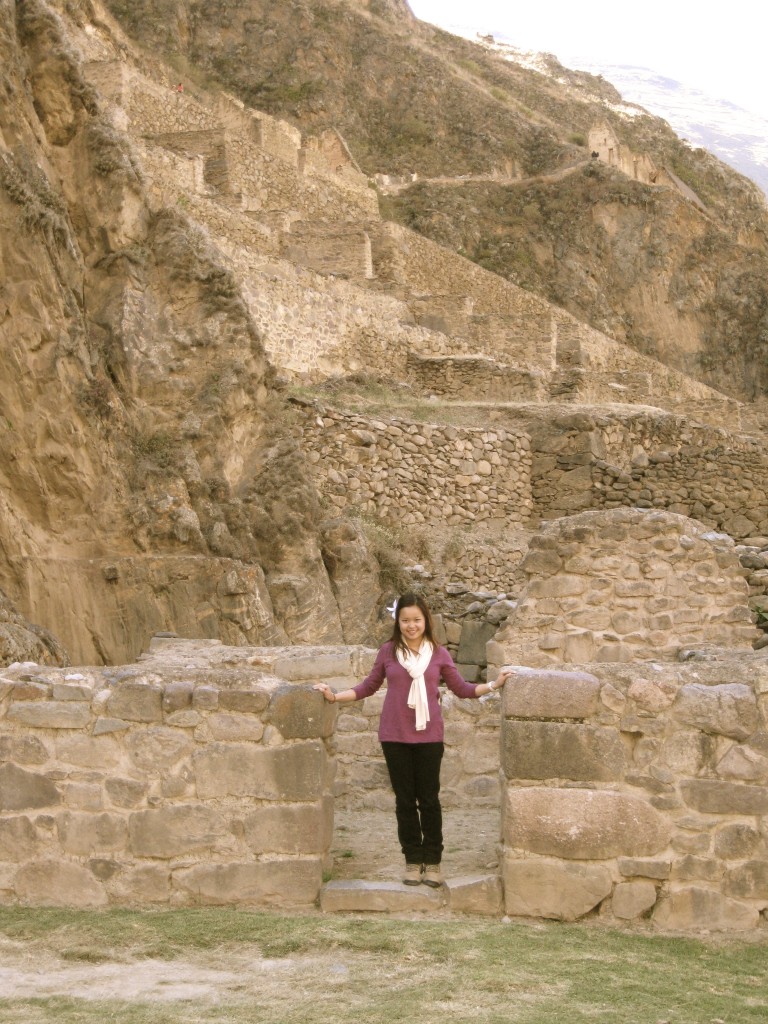
Saúl told us this area was considered the “Sacred Valley of the Incas” because there are glaciers at top of the mountains. The glaciers provide water, a source necessary for all life.
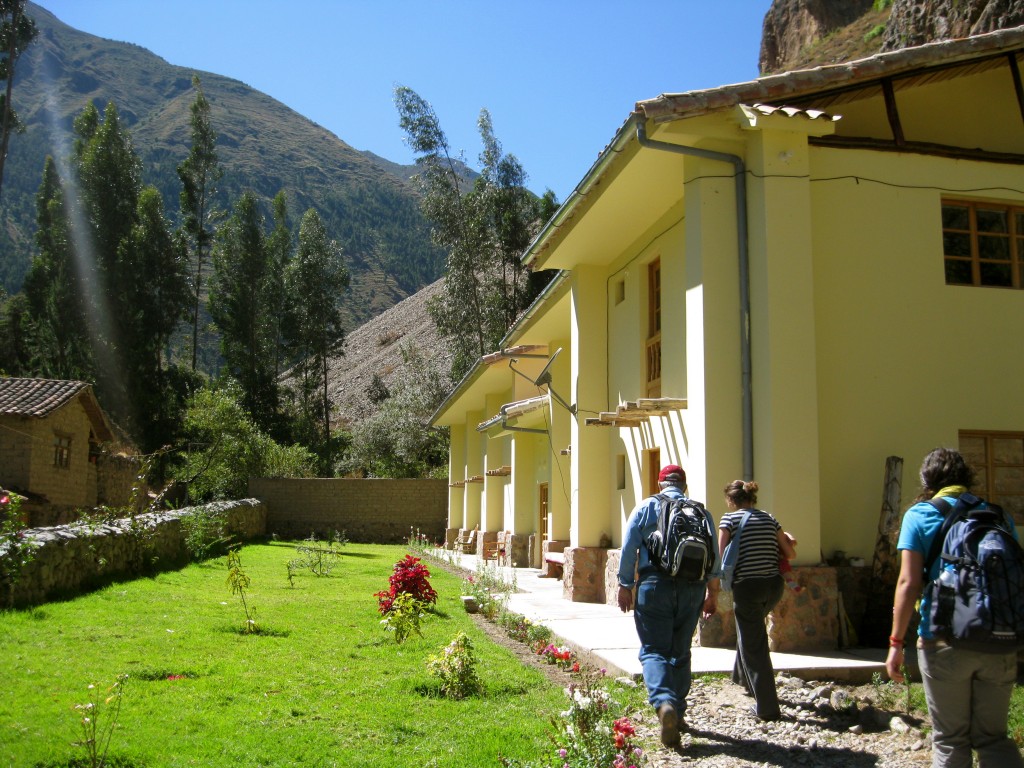
We stayed the night at the Apu Lodge, owned by a sweet family with two precious girls, and had class surrounded by ruins and Inca history.
I apologize for the 5-day hiatus due to lack of WiFi. I won’t be able to upload photos on the blog for a while because the WiFi at our current hotel does not allow it–just visualize with me until then. Please be patient as I attempt to catch up on blogging. 🙂
We have helpers for the Cuzco area: Rafael, a man in his 40s who goes with us everywhere for four days, and Saúl, 28-year-old tour guide. Rafael was so helpful in finding Mass and guiding us around the market. Saúl is a descendent of the Incas, born in Ollantaythambo, so he knows a lot about the Inca ruins. He is very passionate about the history and speaks English well. He’s also in very good shape from all his experiences, so it’s a fun challenge to keep up with him.
Lori, Rafael (our tour guide) and I found a small church down the street from the Pisac market for Mass. It was perfect for me because it was children’s Mass. The majority of the congregation was children, but there was also a nun and three senior citizens. I have a big place in my heart for children and the elderly.
The children were so happy to be in church, and they were singing and clapping. This Mass and church compared to the Mass and church of last week’s in Larcomar is completely different. Today’s Mass was lively, and I felt a sense of community. I saw many smiling faces, and everyone hugged for the sign of the peace. One boy hugged Lori and me. No one reached out to me at the mass in Larcomar, and hardly anyone shook hands.
The three senior citizen women were physically weak and fragile. They could barely walk, and they were very skinny. All three had matching blue and black blankets that they used as covers for the cold. Although they could barely move, they walked to Mass. I don’t know how far they walked to attend Mass, but they inspired me with their dedication to their faith.
After Mass, Rafael, Lori and I followed the nun and children to the “Comedor San Kilian,” St. Kilian church center and dining hall. Children of poorer families are able to go to Sunday school, confirmation class and eat here. This made my day!
I later walked around the famous Pisac Sunday market and bought souvenirs for family and friends. I bought six headbands for sorority sisters, a sweater and a dress made from Andean knitting (it even came with free hair ties), two fabric art pieces, a painting, two notepads with embossed leather covers and six postcards. I spent 113 soles, about $40.
Because I travel a lot, I know some natives try to take advantage of tourists by selling goods at much higher prices. For example, the original price of the leather notebook was 12 soles, but the woman was willing to sell me TWO for 10 soles at the end.
Almost everything costs money around tourist areas. I took a picture of two Andean boys (perhaps brothers) and their pet goat, and that cost me one sole each (about $0.40 each). Maybe this is how the boys’ family pays for their schooling. Even using the restroom costs money, but that’s how the owners make their money. After all, how do they pay for the water costs if they do not charge customers?
Many children were helping their parents at the market since it’s the weekend. A boy about the age of eight was running the restroom station alone. A 13-year-old girl sold clothes to me. We had a conversation in Spanish, and she told me she helps her mom. I never saw her mother.
We rode on the bus for about 1.5 hours from Pisac to Ollantaythambo. It was a bumpy ride, but it was nice to have time to journal and reflect on these amazing experiences. I have yet to soak this all in.
I’m still adjusting to the altitude change, but I’m no longer having trouble breathing. I have pressure in my head that causes a constant headache though.
It’s colder around these areas compared to Lima, so I have a running nose, sore throat and chapped lips. We ate a quick lunch on our own as soon as we arrived in Ollantaythambo. We ran into Saúl who suggested the Pachacamac Pizzeria. About 11 girls ate here, and I had “spaghetti napoleon,” which tasted like regular spaghetti, but with fresh sauce, parsley and mushrooms. We had to eat our food in 15 minutes.
After quickly inhaling our food, we met up with the rest of OU Journey to Latin America members to hike up the Ollantaytambo ruins, the second ruins of the Incans. Saúl guided us through this, and I felt very informed since this is his heritage and town.
Saúl told us this area was considered the “Sacred Valley of the Incas” because there are glaciers at top of the mountains. The glaciers provide water, a source necessary for all life. We also saw the “Temple of the Sun” and important storage houses. There is a face carved on the mountain next to the storage houses, built high up to keep things cool. How in the world was this face carved?
After the hike, Kim and I walked around the town and went inside the market. I wrote a few postcards until class.
We discussed Inca culture and watched a video of Machu Picchu produced by the History Channel. The video was very interesting and informative. This made us all very excited for Machu Picchu!
Yes, we have class on the go in hotels, lodges, wherever.
Ollantaythambo town has dark, narrow and uneven walkways lined with drainage and canine feces…it’s a challenge to walk around town!
After class, we had a Peruvian-style dinner buffet at Tawa Chaqui, across from the Ollantaythambo ancient ruins. It was delicious!
Skinny jeans are stylish…but not with hiking boots. We are all stylin’ in our hiking gear and backpacks!
We stayed the night at the Apu Lodge, owned by a sweet family with two precious girls, and having class surrounded by ruins and Inca history.
Jun
12
A review of Saturday, June 12, 2010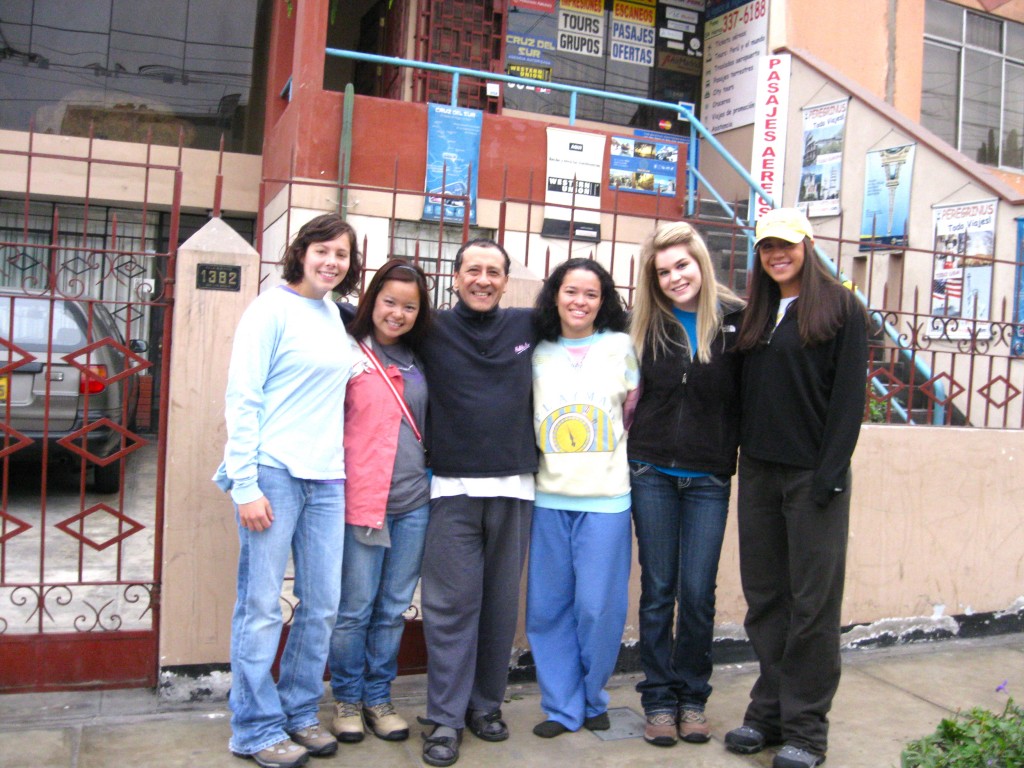
- We all learned we had become attached to our host family because it was very difficult to say good-bye. They were beyond wonderful to us. They want to continue these relationships, and we all exchanged contact information. Left to right: Jane, Chinh (me), Ricardo (host dad), Esther (host mom), Kim and Carlee in front of our four-story host home in Lima.

We didn’t have any trouble in the Lima airport, and the security process went smoothly. We even conquered a corner of the airport like in the history we have learned about for this class!
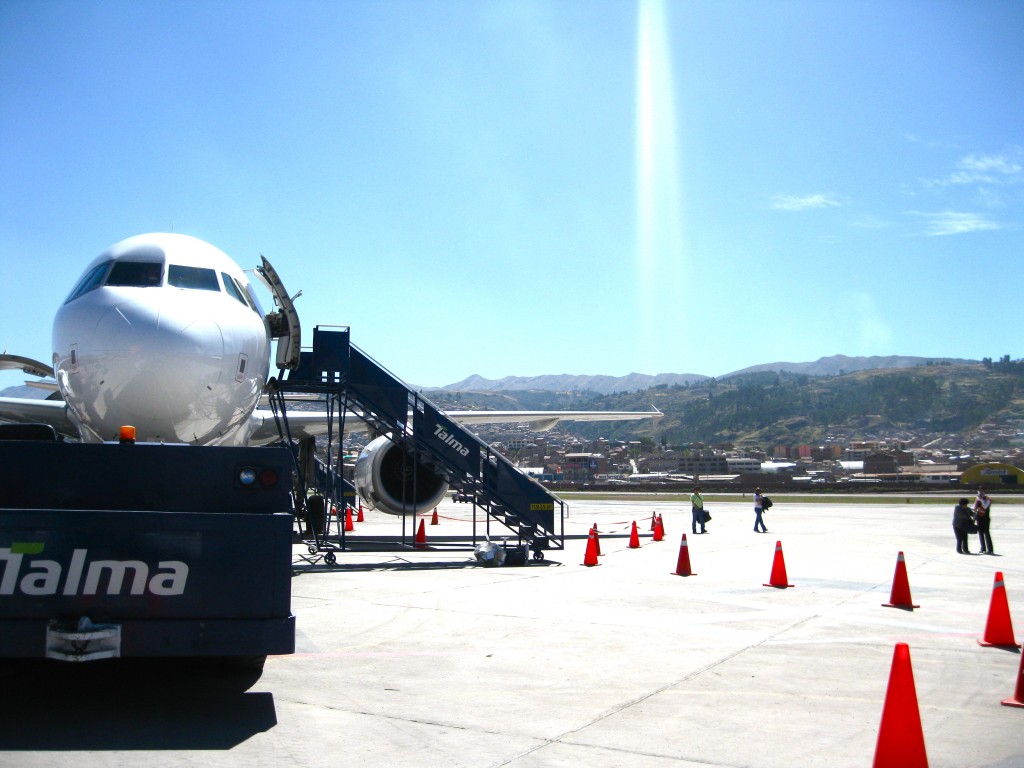
We had a great flight from Lima to Cuzco with awesome snacks: crackers, Twinkie-like cake and chocolate. The flight took about an hour. The coolest part of the flight was being able to walk out of the plane into Cuzco air and seeing beautiful mountains.
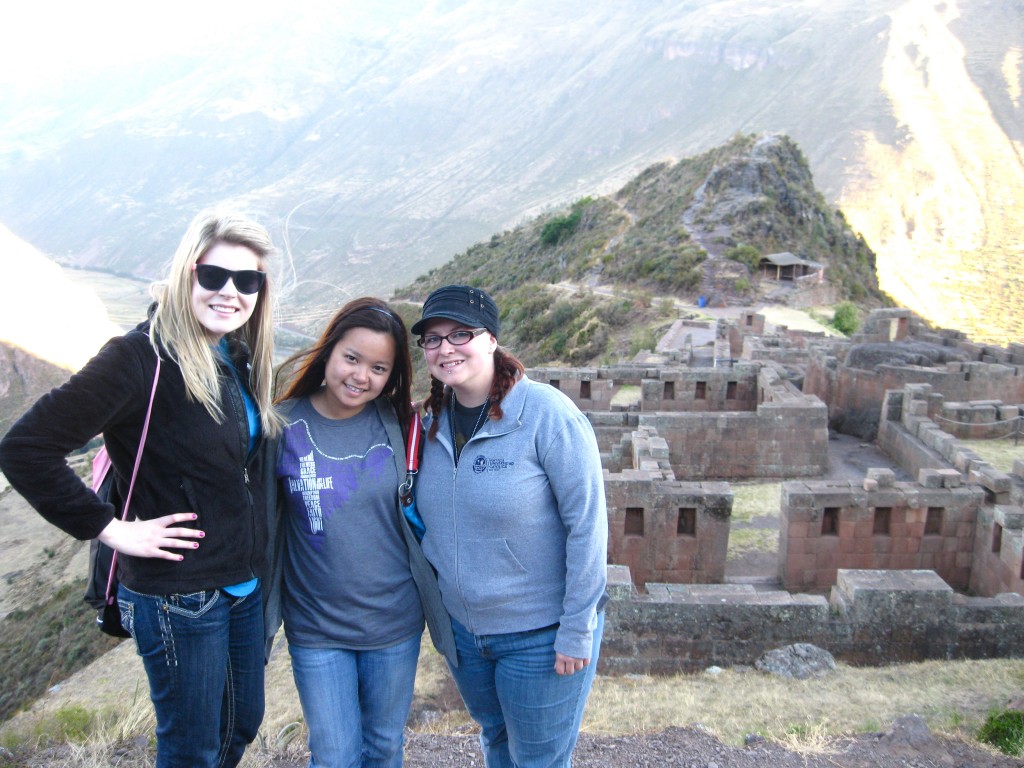
We drove up the mountains and stopped twice for pictures of the Cuzco valley and Inca valley. We later climbed down Pisac (the first Inca ruins) for 2.5 hours. Left to right: Kim, Chinh (me) and Ravae took a picture in front of the Pisac ruins.
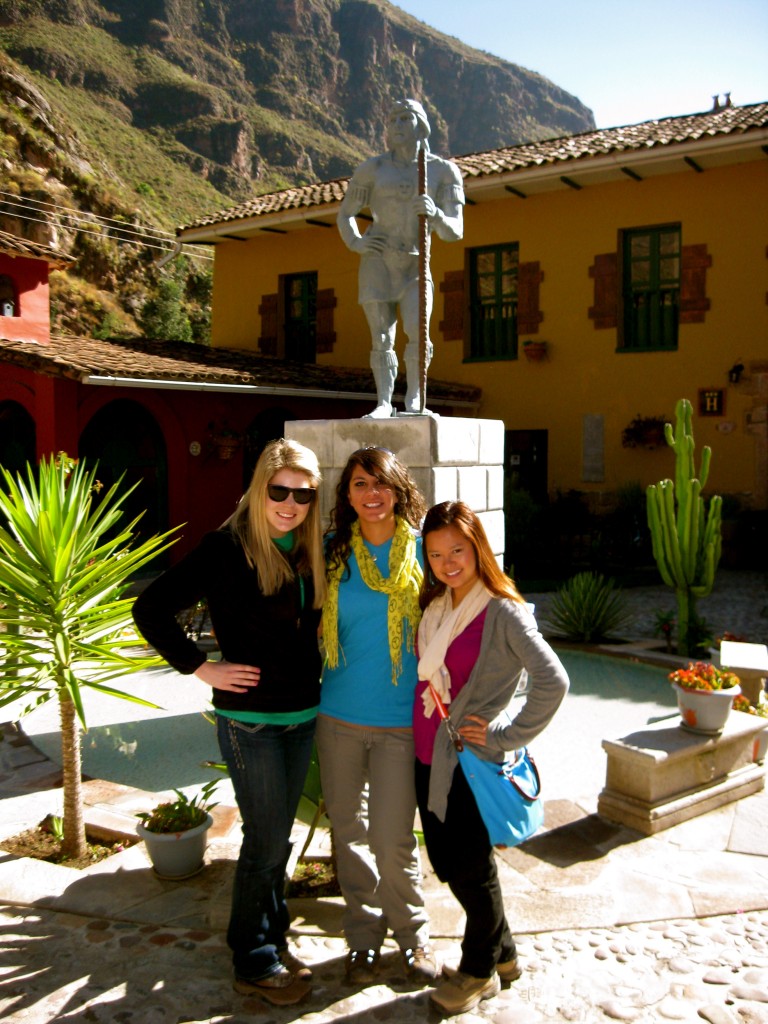
We are staying at the Royal Inka Hotel--it's SO cool to be surrounded by mountains! There's WiFi, pretty gardens, sauna, jacuzzi AND hot water!
Carlee, Jane, Kim, Señora Marchand (my Spanish teacher and Dr. Kenney’s wife) and I were ready to go to the airport at 7 a.m. Dr. Kenney went ahead to the airport because he went with three students (Katherine, Ryan and Whitlee) who had an earlier flight. We ate a light breakfast at the host home before we bid them farewell.
We all learned we had become attached to our host family because it was very difficult to say good-bye. They were beyond wonderful to us. They want to continue these relationships, and we all exchanged contact information.
We gave them our thank-you gifts. I brought OU slippers for the host mom, potholder and card case for the host grandmother, light-up pen and musical keychain for the host dad and notepads for the two sons. Our host family gave us chocolate-covered almonds and pens.
We didn’t have any trouble in the Lima airport, and the security process went smoothly. We even conquered a corner of the airport like in the history books we have read for this class!
We had a great flight from Lima to Cuzco with awesome snacks: crackers, Twinkie-like cake and chocolate. The flight took about an hour. The coolest part of the flight was being able to walk out of the plane into Cuzco air and seeing beautiful mountains.
I’ve never been this high in the mountains before so I was having trouble breathing. My heart was racing and my head had a lot of pressure; I felt like everything was in slow motion. But after about an hour, I adapted to it and felt fine. No one else seemed to have any trouble adjusting.
We dragged so our luggage around the narrow walkways of Cuzco while cars drove by faster than they do in Lima!
We drove up the mountains and stopped twice for pictures of the Cuzco valley and Inca valley. We later climbed down Pisac (the first Inca ruins) for 2.5 hours–my body hurts! It’s interesting to see irrigation and the paths walked on by humans thousands of years ago. I was having trouble and slipped in my hiking boots. How did the Incans move about all in sandals with no support? The steps are very steep; most students found them difficult to walk on, yet the Incans were much shorter and managed fine. How did they do it? Props to them!
We barely made it down by dark. It was getting scary because we could not see very well, yet the walkway is narrow and dangerous.
We walked through the closed market, but I found some indigenous babies. I spoke to them in Spanish, and they understood. I later sat on a corner, and one of the children came to sit with me and held my hand. I can’t wait to play with more babies later on this trip!
We had bread, potato soup and Peruvian pizza at Ulrike’s Café in Pisac. We ate SO much. The flavors ranged from pineapple and ham to meat and mushrooms.
We are staying at the Royal Inka Hotel–it’s SO cool! There’s WiFi, pretty gardens, a sauna, a jacuzzi AND hot water! We are going to continue to have class even while traveling, but it will be at different times and wherever we can. It’s not ALL fun and games; gotta have education, too!
OU Journey to Latin American students finished class at 10:05 p.m. in Pisac (about a one-hour drive from Cuzco), Peru. Is this real life? This study abroad trip is not only different than traditional classroom settings, but it’s different than other study abroad trips.
We have the opportunity to learn about the subject before the trip during bi-weekly meetings and have classes on the road during the trip. This is nice because we learn about our activities day-to-day so we retain the information more rather than cramming it all in at once. Plus, we get to participate in what we learn about so it’s more fun!
Oh, and Hello Kitty iPhone fell in the toilet in our Pisac hotel. As I swung my arms in an attempt to turn on the light, Hello Kitty dove into the Peruvian waters of the (clean) toilet. Good thing Hello Kitty has nine lives; I’ve used two of those lives already!
I am rooming with Kim and Jane (housemates from Lima). We are exhausted and ready to sleep for more adventures tomorrow!
Jun
11
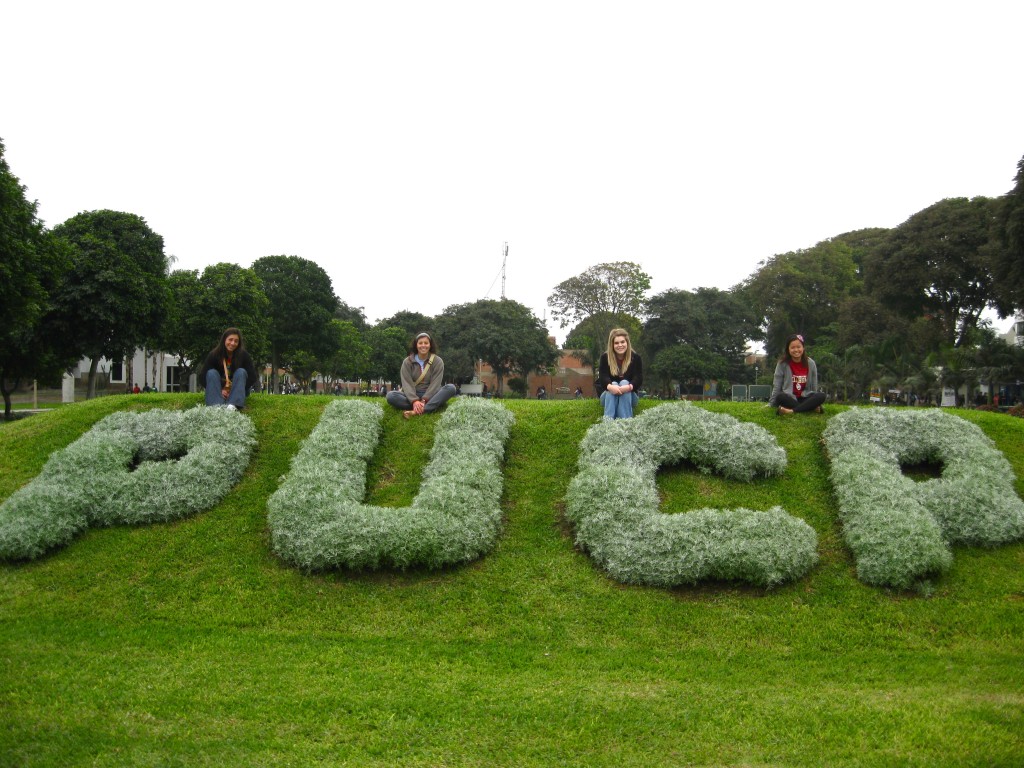
My housemates and I had our last walk to Pontificia Universidad Catolica del Peru. It's our last day in Lima and last class at PUCP.
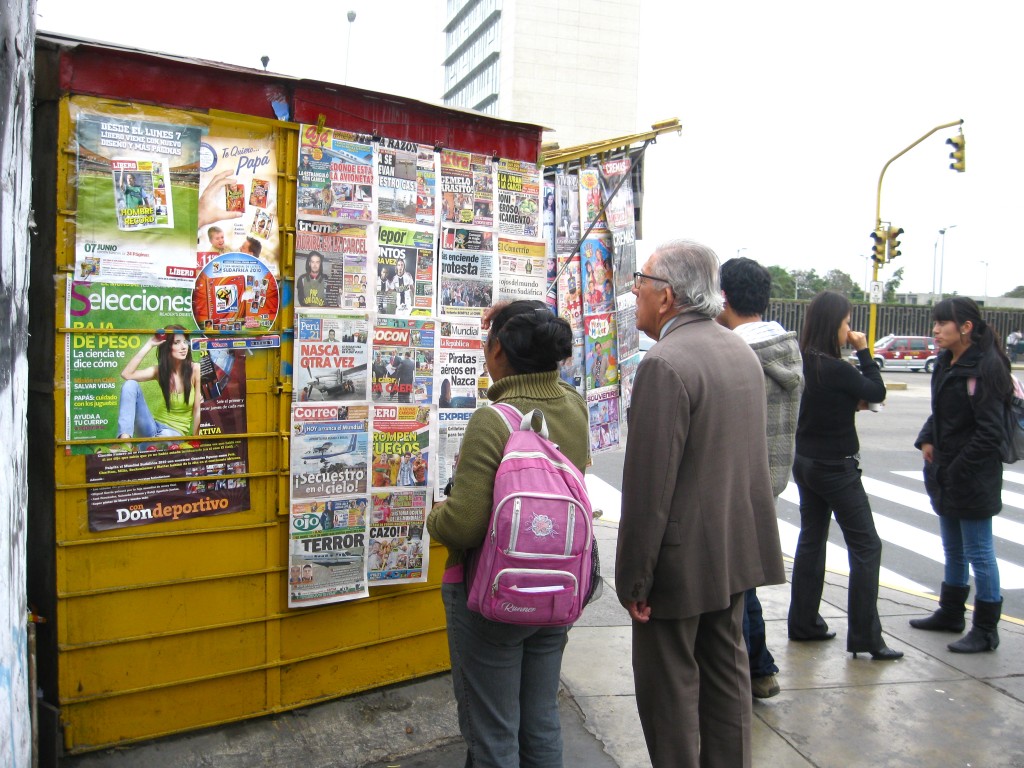
I like to spend time around the newsstands in other countries and observe people’s reaction to the headlines and watch them interact with others around news. Based on my observations, I’ve noticed that news is very important to many countries, Peru being one of them.

We went to the Santa Maria Magdalena Catholic Church in Magdalena, a district of Peru. Unfortunately, the doors were locked, but we were able to see the church with a closer view. It is beautifully adorned in pink and green with an elaborate dome and a statue of Mary on top.
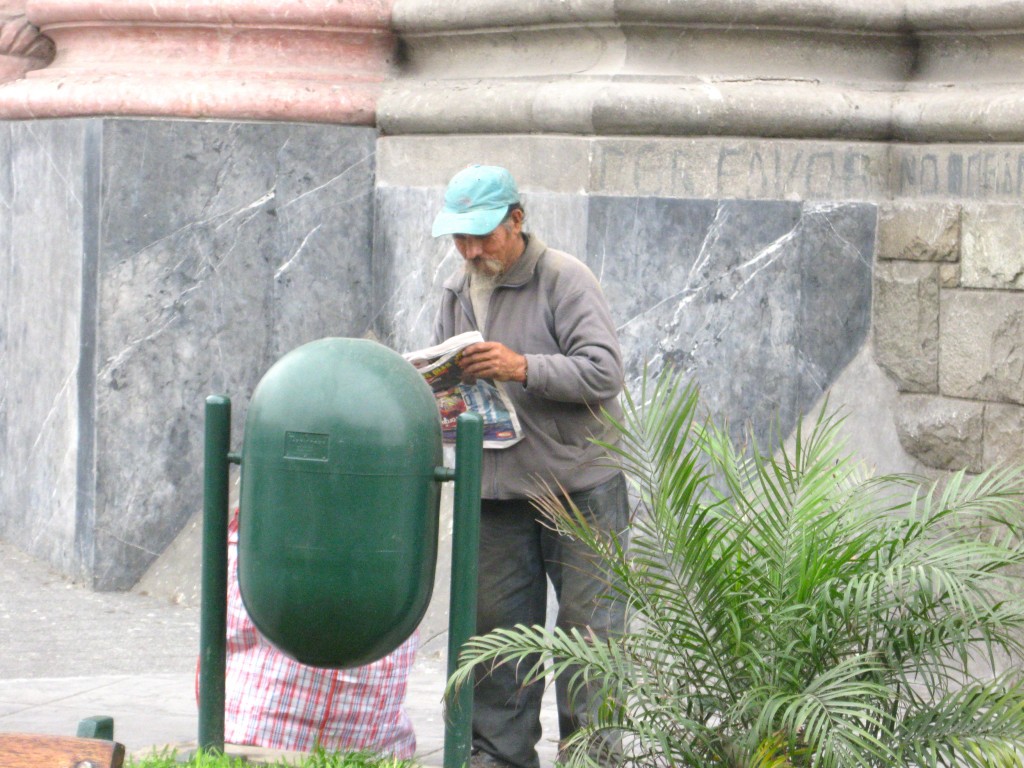
I watched a poor Peruvian man pull a newspaper out from a trashcan to read it. Although he is poor and cannot afford to buy the paper, he has learned of ways to get his news. Watching this man pull the paper out of a trashcan, scan through the pages and put it in his bag reminds me of my reasons to be a journalist: to be the voice and ears to the powerless.
We had our last walk to Pontificia Universidad Catolica del Peru. It’s our last day in Lima and last class at PUCP. I can’t believe we’ve been here 13 days, but I’m excited for Cuzco.
Happy World Cup premiere day! I wish we had more time to watch the World Cup and spend time with Peruvians to see their reaction to soccer, the most popular sport in Peru.
We had a briefing and discussed the observations we’ve had of Lima in today’s final class at Pontificia Universidad Catolica del Peru. We all have learned so much. Many, myself included, had no idea we would learn so much. What a pleasant surprise!
We split up into groups to discuss our observations and had an opportunity to ask Dr. Kenney questions based on our observations and experience thus far. Dr. Kenney knows so much about Peru’s history and culture. Where does he store all this information?
We had capresse, rice with fish, yucca, bell peppers and onions in a flavorful Peruvian sauce and key lime pie for our last cafeteria meal. I’ll miss this campus, but I’m excited for the next two weeks!
We went to the Santa Maria Magdalena Catholic Church in Magdalena, a district of Peru. Unfortunately, the doors were locked, but we were able to see the church with a closer view. It is beautifully adorned in pink and green with an elaborate dome and a statue of Mary on top.
Then we walked around town, found some Incan markets, shopped at San Miguel Plaza, had sweets at Zugatti Gelato & Café and took advantage of our last day in Lima! We also ran into a few of the other ladies of OU Journey to Latin America at the plaza. We later went to Magic City and Casino Miami, casinos by San Miguel Plaza. We ended up not playing any games in the casinos because there wasn’t very many people in them, and we got tired.
Because I am a journalism junkie, I tend to be extra observant and curious of many things. I like to spend time around the newsstands in other countries and observe people’s reaction to the headlines and watch them interact with others around news. Based on my observations, I’ve noticed that news is very important to many countries, Peru being one of them.
People of all social class buy newspapers and magazines from the newsstands in Peru. It seems that non-Americans pay more attention to news than Americans. For example, in tough economic times, newspaper subscriptions and the number of papers purchased tend to decline, yet the Peruvian poor continue to immerse themselves in the news. Many college students purchase the paper. Students usually surround the student-produced newspaper stand at PUCP.
Also, I watched a poor Peruvian man pull a newspaper out from a trashcan to read it. Although he is poor and cannot afford to buy the paper, he has learned of ways to get his news. Watching this man pull the paper out of a trashcan, scan through the pages and put it in his bag reminds me of my reasons to be a journalist: to be the voice and ears to the powerless. I don’t know if he can read or not, but I know he is interested in current events. Although he does not have a job, yet he has learned to make a living by finding reusable things in trashcans. He has also learned to educate himself by picking up a used newspaper and being aware of the world around him. He walked off with the newspaper and a bag (about the size of his body) filled with others’ junk in which he hopes to turn into treasures…or a few soles to make it through another tough day.
I Skyped with Mommy, blogged and e-mailed for what may be the last time in the next two weeks. I don’t know how much Internet I will have in the mountainous regions of Cuzco and in the Amazon, but who’s complaining?
I’m so nervous about high altitude sickness (13,000 ft) and falling while climbing Wayna Picchu (the very top of Machu Picchu, known for people falling and dying). But Dr. Kenney will be with us, so hopefully that will help my nervousness!
We had Chifa (Peruvian-Chinese food) for our last meal in Lima and spent time with our wonderful host mom. She does so much for her husband and two kids, works two jobs and dances–what a woman!
We are packed and watched reruns of the World Cup before going to bed. It was our first time to turn on the TV in two weeks!
Jun
11
A review of Thursday, June 10, 2010
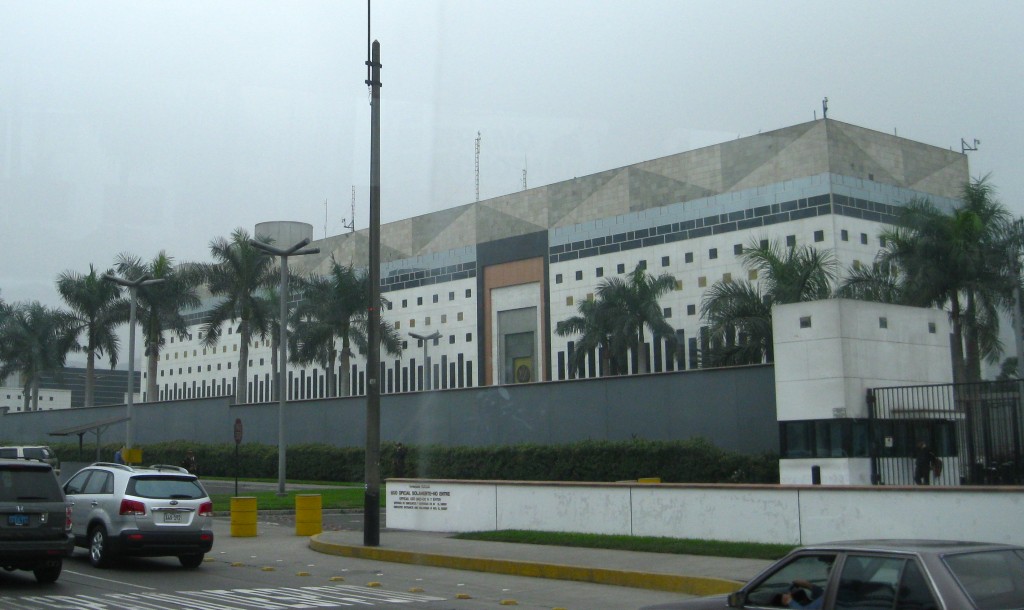
We visited the U.S. Embassy in Lima and met with five officials from different U.S. departments. We all agreed this was one of the most interesting and prestigious experiences so far. The U.S. Embassy in Lima is one of the coolest embassy structures I've seen. A walkway like the Great Wall of China leads to a tall multi-colored stone structure with small, square black glass windows!
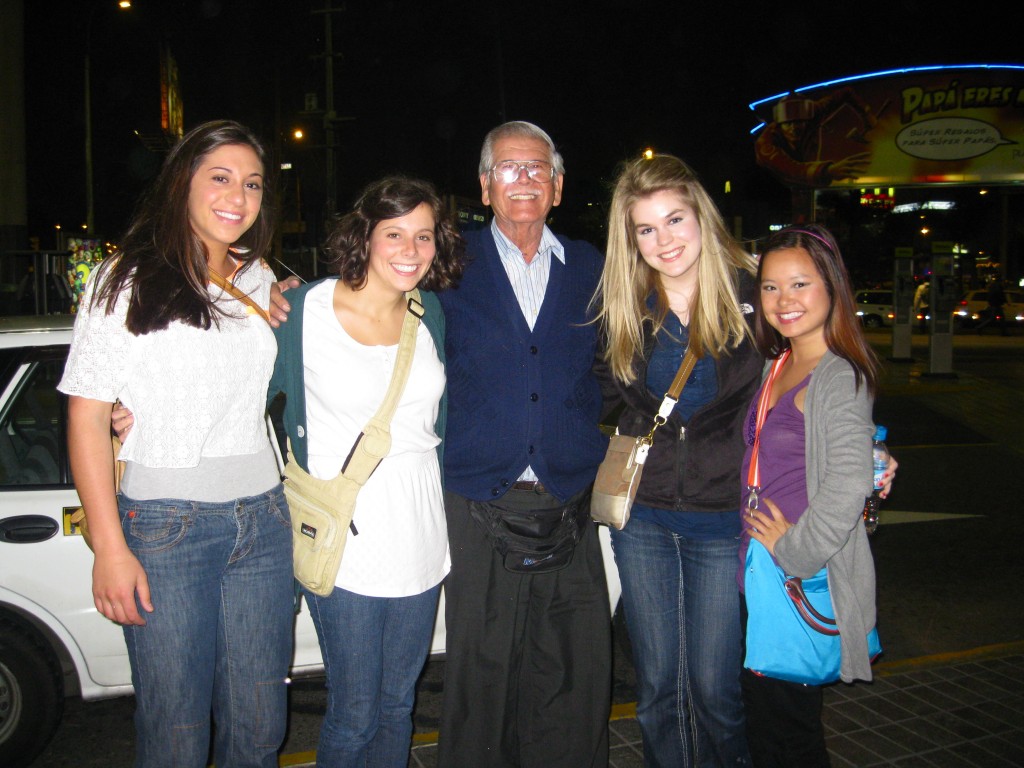
The memories of the taxi drivers blend together after awhile, but I will always remember today’s 63-year-old taxi driver, Ricardo.
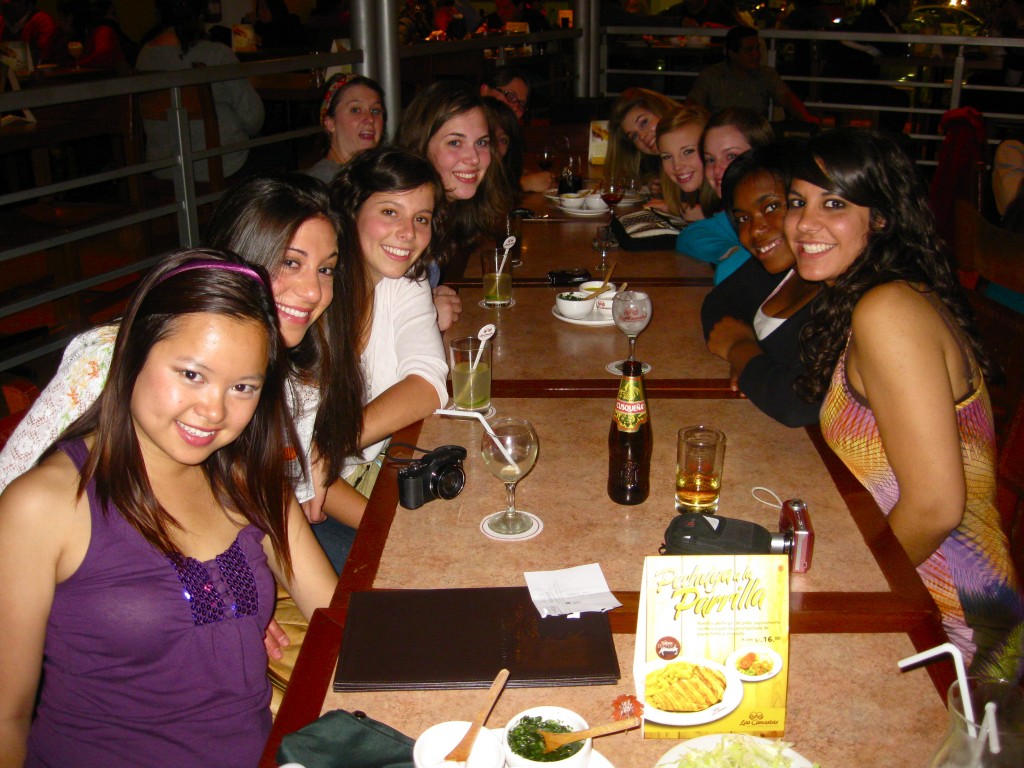
All the girls went to a Peruvian restaurant with our new friend and PUCP alum, Luis—what a lucky feller.
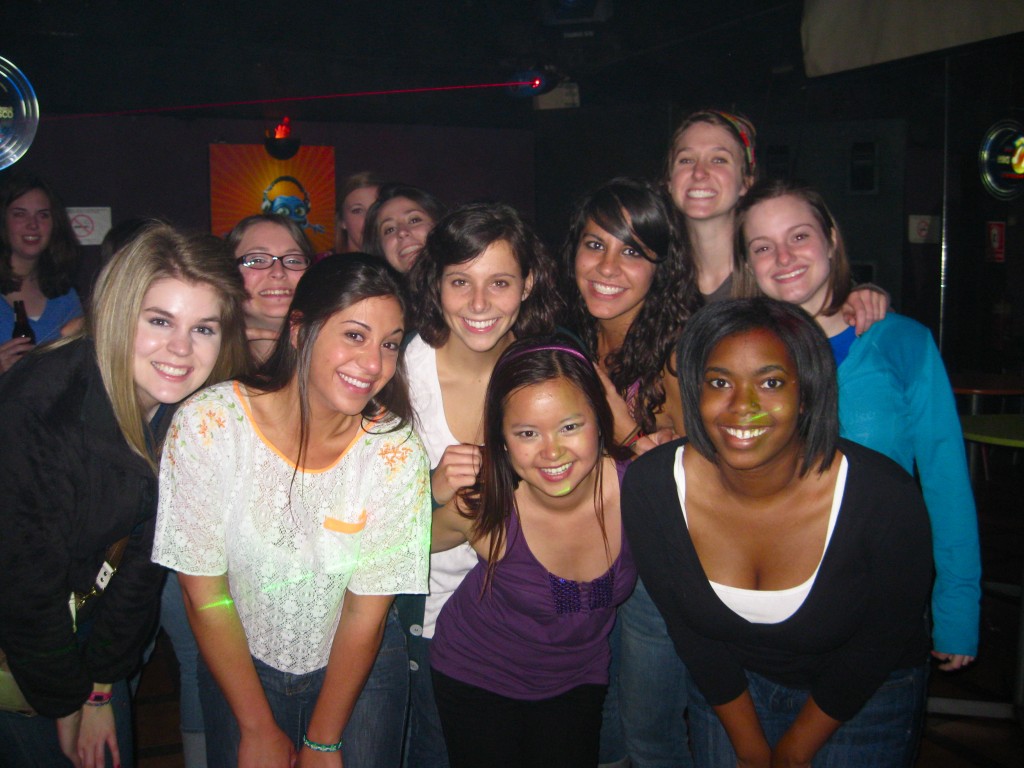
Then we went to La Calle de Pizzas in Miraflores to get our last dose of Lima. We danced at a discoteca. There’s only three discotecas on La Calle de Pizzas that play Latina and American music, and we have been to all three.
Some taxi drivers try to make our prices higher than Peruvians’ just because we are Americans, but I refuse to allow that kind of discrimination (or any kind of discrimination). I’m the queen of bartering thanks to my world-traveling experiences; therefore, I am skilled at getting taxi rides to be the lowest price possible.
It’s probably because people are so intimidated by me. Ha-Ha. Not really. BUT Dr. Kenney said I look Peruvian. And I’ve had numerous Peruvians ask me which Peruvian city I’m from and others speak Spanish to me thinking I’m fluent. I wish!
We learned about Peru’s international relations in today’s class. We had rice with fried eggs and hamburger patties, chicken tamales, chicha (drink made from purple corn with a hint of lime) and rolls for lunch. I can’t believe we have been in Peru for 12 days!
We visited the U.S. Embassy in Lima and met with five officials from different U.S. departments. We all agreed this was one of the most interesting and prestigious experiences so far. The U.S. Embassy in Lima is the coolest embassy structure I’ve ever seen. A walkway like the Great Wall of China leads to a tall multi-colored stone structure with small, square black glass windows! It’s a shame cameras were not allowed past security—that is why I only took 20 pictures today.
Most of us wished we had more time to speak to the officials because they were so informative. We learned a lot within 1.5 hours. What a great and relevant afternoon activity. This is also definitely a rare opportunity. When would we ever be able to speak to these kinds of professionals again? It’s not easy to have a private meeting with U.S. Embassy and foreign relations officials.
An intern my age, Amanda, told us about her experiences while living in Peru for three years at numerous times. Her parents work for the Embassy. I found out she goes to school with my friend Kelsey in Gonzaga, at a small university in Washington. She shared her views with me, and later found me on Facebook. I love meeting new people, connecting with them and continuing relationships.
Our host family made my favorite dish, lomo saltado (rice with beef strips sautéed with onions, tomatoes and potatoes). This is my third time to have this dish in the 12 days I’ve been here, but this time was the best because it had the most flavor AND the host mom added bean sprouts and soy sauce! We also had a Peruvian-style egg drop soup, charo. I’m so sad we only have one more day with our host family!
It’s interesting and fun getting to know the Peruvian taxi drivers. Getting in cars with strangers can be scary, but it’s more reassuring when we talk to them. The age of our taxi drivers have ranged from 28 to 63.
The memories of the taxi drivers blend together after awhile, but I will always remember today’s 63-year-old taxi driver, Ricardo. He drove us from our host home to San Miguel Plaza, an outdoor mall. His personality and hospitality brought me joy in that short amount of time we were together for the taxi ride.
He made an impression on me because of what he stands for. Ricardo, along with many other senior citizens of Peru and around the world, do not have the opportunity to enjoy their later years. He does not have the opportunity to go on cruises with his wife or play with his grandchildren. Why? Because he does not have retirement savings or pension benefits like many Americans do.
No matter how hard Ricardo works, he does not make enough money to save; therefore, he cannot afford to take a day off of work. I am impressed with his ability to drive in this unorganized and unregulated traffic. I’m more impressed with his optimism and ability to support his wife and three children. Not only did Ricardo understand my Spanish clearly, he was willing to put the taxi in park to take a picture with us. Thanks, Abuelo (Spanish term for grandpa, which he gave me permission to call him).
All the girls later went to a Peruvian restaurant with our new friend and PUCP alum, Luis—what a lucky feller. Luis has been Dr. Kenney’s assistant for the past 12 days we have been in Lima. He is an anthropologist. He also works for Pontificia Universidad Catolica del Peru international services department, which is why he helps Dr. Kenney. It was our last time to see him, but only God knows what the future holds.
Then we went to La Calle de Pizzas in Miraflores to get our last night life dosage of Lima. We danced at a discoteca. There’s only three discotecas on La Calle de Pizzas that play Latina and American music, and we have been to all three. We got silly on the dance floor––I think the Peruvians think that’s how we normally dance. Well, they’re correct!
Based on our observations, Peruvians do not go out on Thursday nights (at least where we go) like people go out in the United States. Plus, Peruvians go out at a much later time. We usually go out around 10 p.m., but we do not see many Peruvians until around midnight, when we are headed home. The discotecas, or clubs, are also much smaller. We practically had the entire discoteca to ourselves tonight because we were there earlier than the time Peruvians go out. We still took up the dance floor with our group. These gals are so much fun!
Jun
9


We visited PromPeru for a tour and presentation.
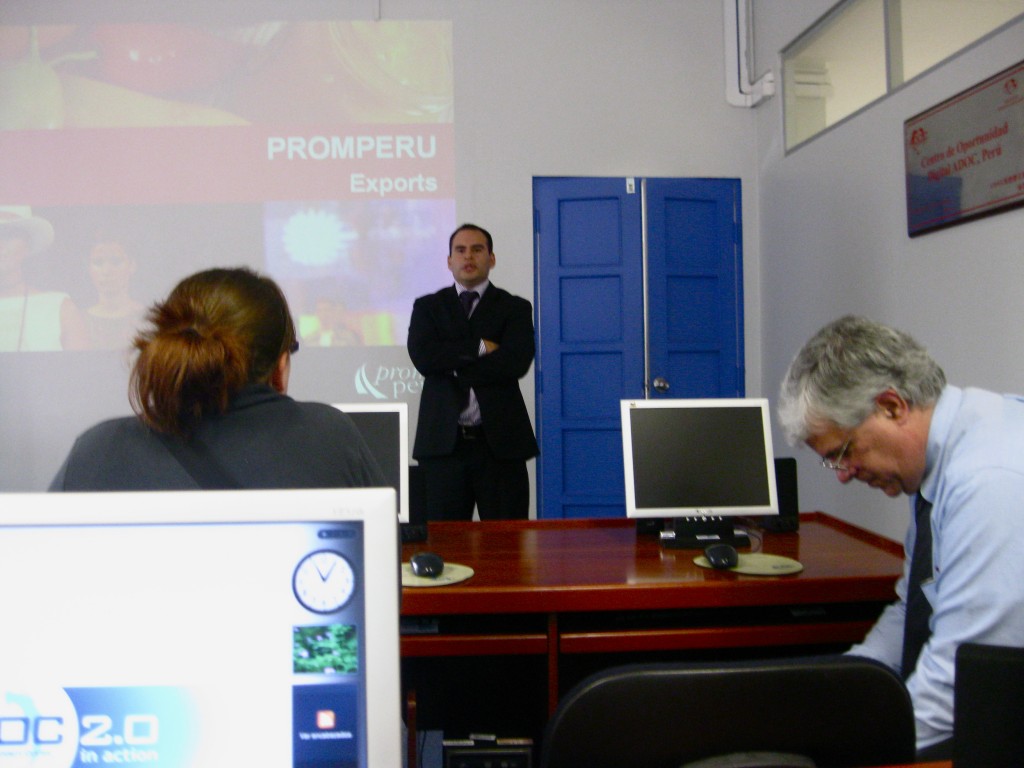
PromPeru gave us a private presentation of their programs and goals.

It's great to see so many citizens attend the workshop to better their economy and living conditions!

This is what a typical class at Ponticia Universidad Catolic del Peru looks like. Notice how attentive we are!
It’s another cloudy day. My clothes are still not dry after three days because it’s been cloudy. And our room smells like wet dogs since it’s covered in wet clothes. Proomie also did laundry, but we managed to fit all our clothes on the unused top bunk.
I miss the American clothes dryer, but I’m in Peru so I can’t complain! Apparently we had a small earthquake overnight–I must have slept through it! I’m such a heavy sleeper.
We started the day earlier at 8 a.m. instead of 9, but I was less sleepy. We visited PromPeru for a tour and presentation. PromPeru is a commission for the promotion of exportation and tourism in Peru. We participated in the workshop that’s free to all, and then an official gave us a private presentation upstairs of PromPeru’s programs and goals. It’s great to see so many citizens attend the workshop to better their economy and living conditions!
We had rice, beef and sweet potatoes with Peruvian sauce drizzled on top, flan and pear juice for lunch. We went to the campus bookstore and bought pens and sweaters.
I bought a Pontificia Universidad Catolica del Peru sweater in a crimson color. Boomer Sooner from PUCP!
We switched things up today and had class in the afternoon instead of morning. I’m not sure that’s a good idea since we usually get sleepy after lunch. We learned about the economy of Latin America in today’s class. It’s nice to be done by 5 p.m. today for a change, but there’s construction next door to our host home. I also miss laws of the U.S.A. That sounds silly, but it seems like there’s not much of law and order here in Peru. There are not (or at least that I know of) any laws about construction work. Construction goes on until late here in Peru…MUST IGNORE DRILLING NOISES.
We had rice, mashed potatoes and chicken with a special Peruvian sauce and caramel crepes and Peruvian ice cream for dinner. The mother of our host mom is such a great cook!
Dr. Kenney had plans with his family, but we enjoyed our host dad’s company. I had a long conversation with Ricardo, our host dad, about traveling and the importance of experiencing the world. He knows all about that since he owns a travel agency. I love practicing Spanish with him because he makes me feel comfortable, and I’m not worried about being wrong.
I jammed to music via my iTunes library with my housemate and watched Usher music videos wishing we were the girls in the videos. Hahaha not really…but Usher is good-looking!
We have bonded so much so quickly! It’s just something about traveling and getting to know a country that makes us all bond.
I can’t believe we have been in Peru for 11 days!
Jun
8

Fr. David, originally from the United States now a Peruvian citizen, visited us at the Peyton Center and spoke about his studies and experiences.
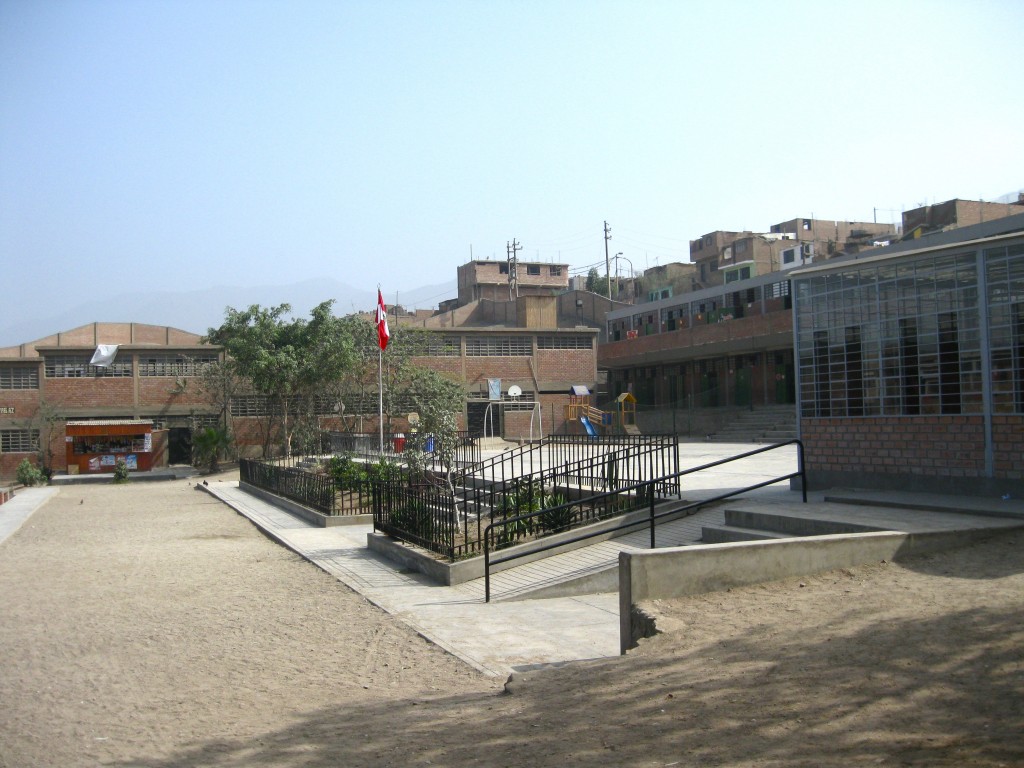
My favorite activity of the day is the visit to Fe Y Alegre No. 25 (Faith and Joy) school. Students there are ages 4 through 17.

The younger students were so precious. I took many pictures of them. They sang and danced for us.

I wanted to take home every child as souvenirs!

I love being around children because they remind us to enjoy the little things in life.

Our last activity of the day was a visit to La Lombriz Feliz (The Happy Worm) ecology center, garden and worm farm in Canto Grande.
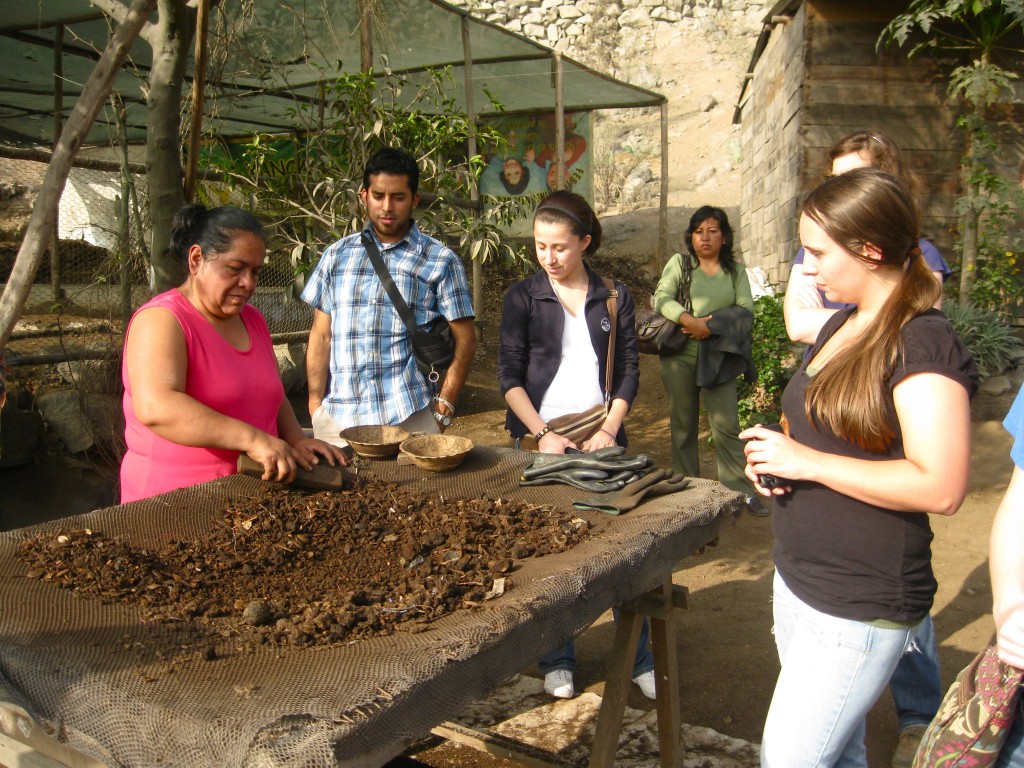
La Lombriz Feliz is in a very poor area once surrounded by trash. Community leaders created this to decrease neighborhood contamination by separating trash by organic (to turn into compost), nonorganic (to recycle) and nonusable (to trash appropriately).

If it weren’t for this ecology center, the neighborhood would not have very much greenery. I’m so glad community leaders thought about their future and came up with an innovative idea for the overwhelming amount of waste.
We had fresh-squeezed orange juice, Angel Flakes (the less tasty version of Corn Flakes), toast and jelly, jam, turkey and cheese for breakfast. We made it through the night with no problem…well, except Whitley went to the bathroom in the middle of the night, Kim and Ashley thought it was an intruder, locked the door and Whitley got locked out so she started knocking and some girls FREAKED OUT and screamed. HAHAHA
After breakfast, Fr. David, originally from The United States now a Peruvian citizen, visited us at the Peyton Center and spoke about his studies and experiences. We were able to spend two days in Canto Grande exploring and learning. Last year’s group spent only one day in Canto Grande. God is good!
Elmer Garcia, a man who grew up in the mountains then later moved to a very poor part of Peru told us his story. He struggled, but became a community leader. A woman from Mexico, Rosalina Sanchez, and a man from Okmulgee (what a small world!) with experiences in helping the Peruvian poor also shared their stories with us. It’s SO inspiring how these common people are doing extraordinary tasks!
The Peyton Center served us rice with beef strips sautéed with onions and tomatoes (this was our first meal in Peru last week and my favorite Peruvian dish); guacamole and Peruvian-style wontons; chocolate cake and Inca Kola for lunch. We have been searching for guacamole, and this was delish!
My favorite activity of the day is the visit to Fe Y Alegre No. 25 (Faith and Joy) school. Students there are ages 4 through 17. The school has two shifts: a morning shift and an afternoon shift. Because the population is so big, the school cannot hold all the students at once. We toured the school, played with the students and learned about their promising programs. I wanted to take home every child as souvenirs! They were so precious. I took many pictures of them. They sang and danced for us. I love being around children because they remind us to enjoy the little things in life.
I was glad to see the school had science labs, a library, big soccer fields, two volleyball courts, a pastoral office and a special education class. I was also overjoyed to see occupational programs such as automobile mechanics, ceramics, weaving and eight others. There are a total of 11 programs students age 13 to 17 may choose from each semester. It’s nice to have these classes as fun “electives,” while also training students for future jobs.
Our last activity of the day was a visit to La Lombriz Feliz (The Happy Worm) ecology center, garden and worm farm in Canto Grande. It is in a very poor area once surrounded by trash. Community leaders created this to decrease neighborhood contamination by separating trash by organic (to turn into compost), nonorganic (to recycle) and nonusable (to trash appropriately).
A bag of 1 kg of compost in a regular bag costs 1 sole, while the same amount of compost in a nicer bag with the brand logo costs 1.5 soles. The money made goes to pay for workers at La Lombriz Feliz and fund services such as the children’s garden. Members of La Lombriz Feliz encourage neighborhood children to learn about gardening and nature while bringing vegetables home to their families. This is especially important in Canto Grande because the area is on a dry hill. If it weren’t for this ecology center, the neighborhood would not have very much greenery. I’m so glad community leaders thought about their future and came up with an innovative idea for the overwhelming amount of waste.
We came back to our host homes in Lima. Dr. Kenney and I discussed how funny it is that we consider our host homes “homes” now after only 10 days. We sure missed our “home,” and were glad to be back. Our host family was welcoming as usual.
We had boiled eggs, mashed potatoes with a Peruvian sauce, avocadoes and soup for dinner…delicious as always!
It’s amazing how different Lima’s weather is just from district to district within a city. Even though it’s winter here, I wore a tank top for the first time since this trip in Canto Grande, yet I am cold now back at our host home.
Jun
8
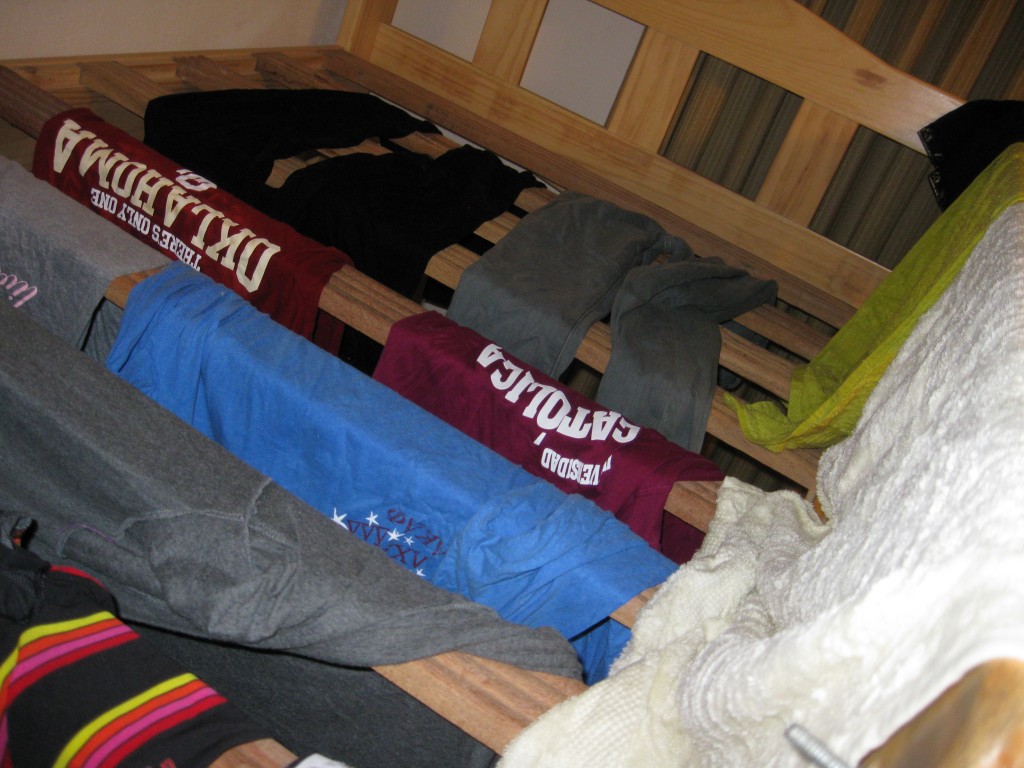
I hung my clothes over Proomie´s unused top bunk (she sleeps on the bottom) for clothes to dry since the roof is full of clothes, but they did not dry in time. Proomie has a nice fort though!
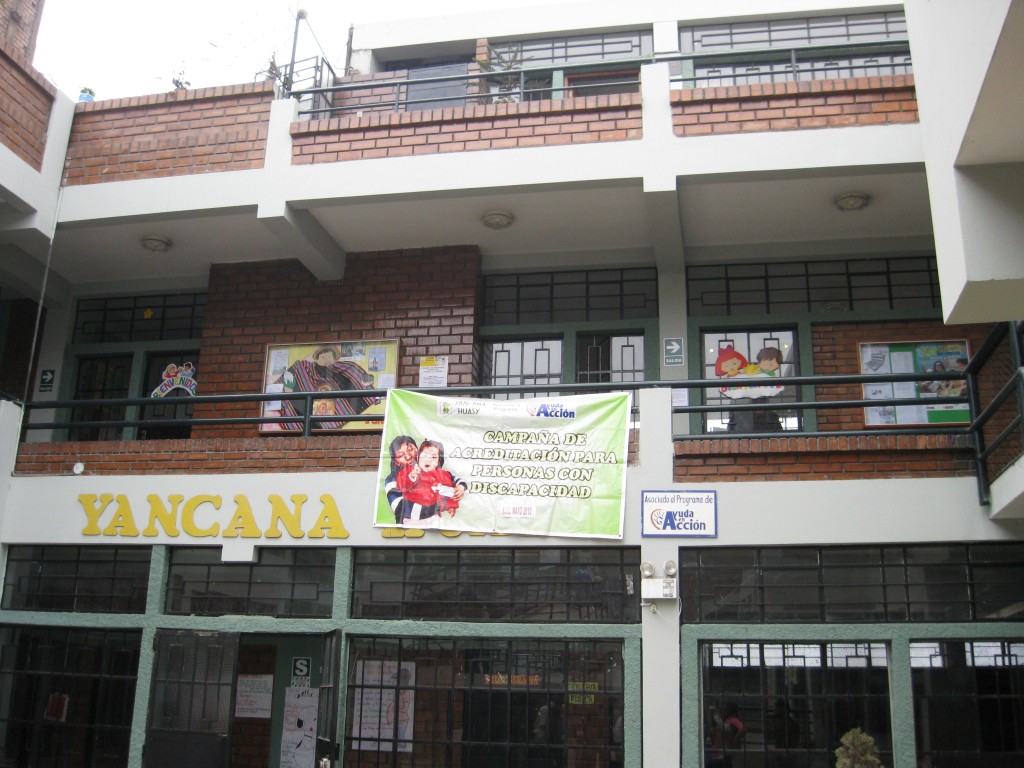
We went to Yancana Huasy, a school built by a priest in the 1980s for disabled children with services at a low cost.
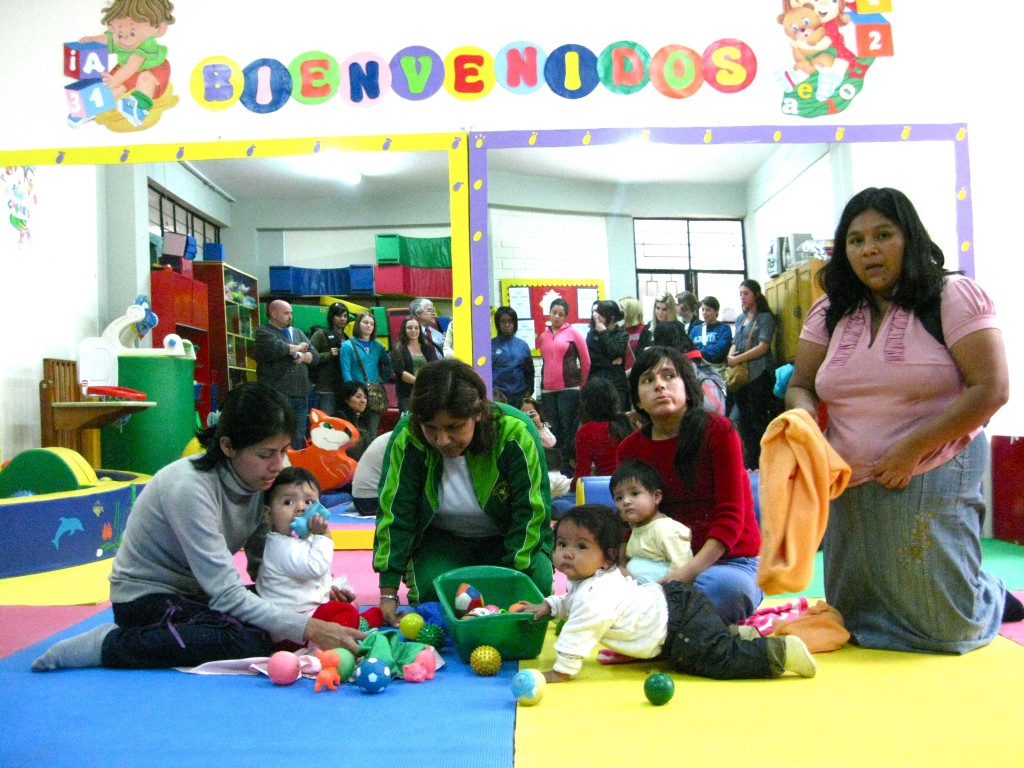
This was my favorite room in the school because I love babies!
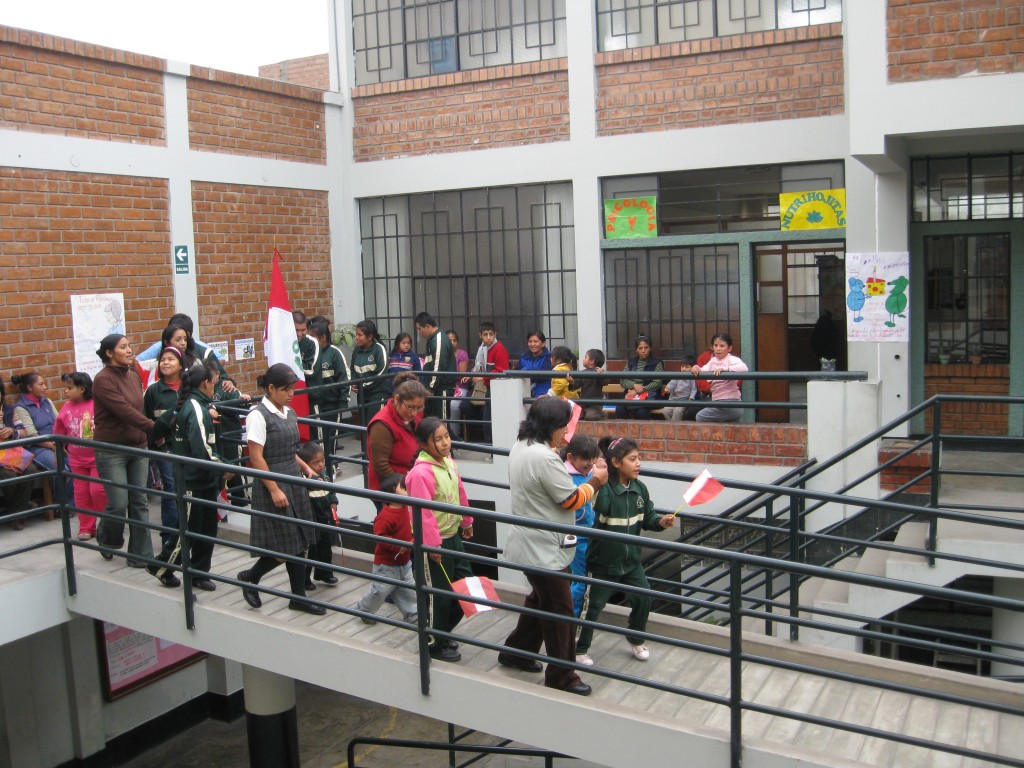
The students of Yancana Huasy are celebrating Flag Day here by parading down the stairs! This day honors those who were lost in battle and celebrates the Peruvians' allegiance to the flag.
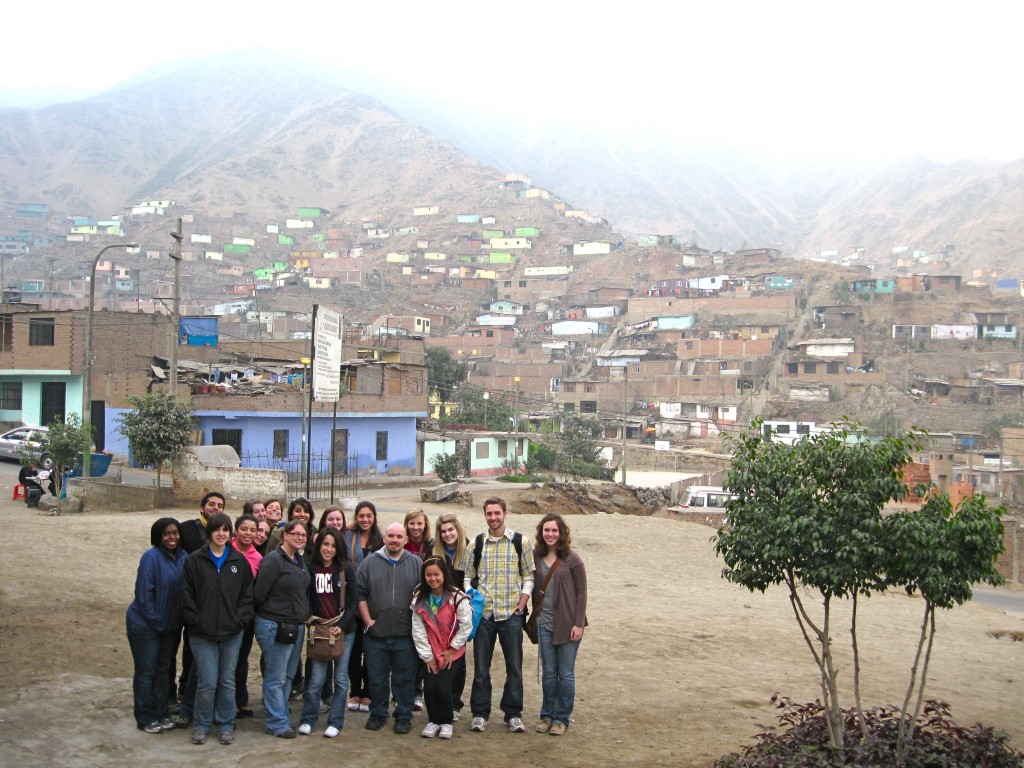
Canto Grande, a very poor part of San Juan de Lurigancho district (most populated district of Peru). Canto Grande is a shantytown that was previously uninhabited land, but was taken over by the very poor population of Peru.
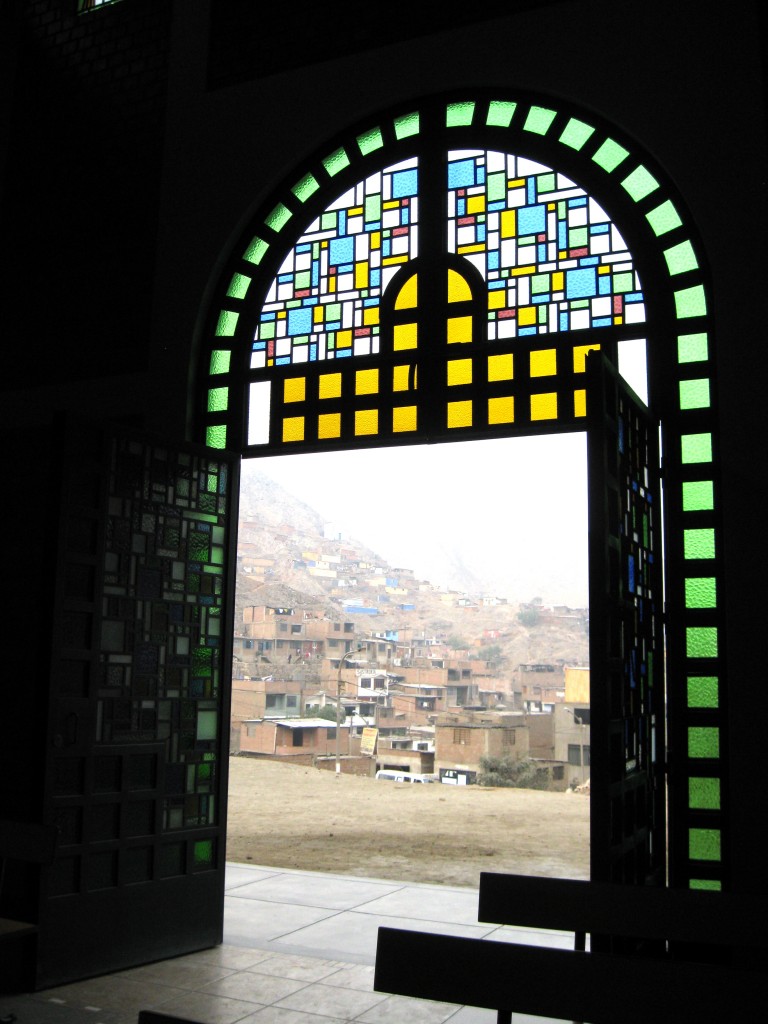
We later visited Lord of Hope Catholic Church, led by Fr. Jorge, in Canto Grande. This church also had a three-story office next to it with health services such as a dentist office, a health clinic, a pharmacy and even a health clinic specifically for women. The third floor is for pastoral offices. This was made possible by donations from Germany.

It was a humbling experience to see their contentment and hope even when they live in boxes with no/little electricity or water.
We had toast, bologna, cheese, condensed milk and peach juice for breakfast. I was kind of sad leaving our host family even though it’s only for a day because they’re so great to us. I feel like we are a family already after nine days!
It’s another foggy, cloudy day in Lima, but it’s Flag Day here! This day honors those who were lost in battle and celebrates the Peruvians’ allegiance to the flag.
Hillary Clinton is here for the 40th anniversary of the General Assembly of the American States. I really wish we could see her!
I tried to stay away from the “typical sorority look” and pack lightly during my stay in Peru, but I ran out of clean jeans and blouses; therefore, I am forced to wear the only clean clothes I have: leggings, tie-dye Tri Delta t-shirt, North Face jacket and North Face backpack. I’m ultimate sorority tourist on this campus today. 😀
I even hung my clothes over Proomie’s unused top bunk (she sleeps on the bottom) for clothes to dry since the roof is full of clothes, but they did not dry in time. Proomie has a nice fort though!
We talked about the poor population of Peru and Dr. Kenney’s experiences while living here for eight years. It’s astonishing how these poor Peruvians live with so little. I applaud Dr. Kenney for his experiences and dedication to the people of Peru. His family lived in Canto Grande, and they had to deal with contamination and sanitary problems. His children could not crawl because of the dirt floors, and he and his wife handwashed all their diapers. He expressed to us his happiness when he saw his children run through grass when they moved to the United States. I love hearing his stories because they are his own experiences, and they are inspiring!
We ate avocado salad with corn, peas and carrots; Peruvian roast with white rice; rolls and rice pudding and drank mango juice for lunch at the school cafeteria. I really enjoy the school food.
I saw a dozen Asian students eating the rolls on a fork while in line to get food–SO ASIAN…even in Latin America! Haha
We went to Yancana Huasy, a school built by a priest in the 1980s for disabled children with services at a low cost. Yancana Huasy also provides job training and work opportunities for disabled adults. This was also the perfect place to buy souvenirs because the money goes to fund school and programs. I bought six greeting cards, two coin purse key chains, a stone egg, a billfold and four bracelets for 68 soles (Peru’s currency, which currently equals about 2.82 soles for $1). I’m excited to give these souvenirs to friends and family and tell them about how their gift makes a difference. I enjoyed seeing God’s work through Peruvians helping the poor.
We later visited Lord of Hope Catholic Church, led by Fr. Jorge, in Canto Grande, a very poor part of San Juan de Lurigancho district (most populated district of Peru). Canto Grande is a shantytown that was previously uninhabited land, but was taken over by the very poor population of Peru. This is a beautiful church although it is in Canto Grande. This church also had a three-story office next to it with health services such as a dentist office, a health clinic, a pharmacy and even a health clinic specifically for women. The third floor is for pastoral offices. This was made possible by donations from Germany. I am overjoyed to learn that other countries and the Church are doing their part to help the poor of Peru. It was a humbling experience to see their contentment and hope even when they live in boxes with no/little electricity or water.
We are staying overnight at the Peyton Center, a multipurpose center named after a priest with classrooms, sleeping porches, auditorium and recreational services. This place is able to provide low-cost services to the poor through programs like ours who pay regular prices to help fund it. Although it is in Canto Grande, a poor and infamously dangerously area in Peru, we are safe with water, electricity and security. It’s fun to be with everyone overnight for a change. The ladies are on the second floor. I am staying with Kim, Kristina, Ashley, Whitley, Jenny, Faith, Lorri and Katherine in the second room. The rest of the gals (Carlee, Jane, Courtney, Caroline and Ann) are in the first room, and Ryan, Andy and Dr. Kenney are in a room on the first floor. We played basketball and soccer and visited until dinner (which seemed like forever because I was starving…as usual).
We had vegetables (corn, carrots, green beans and broccoli), mashed potatoes, roasted chicken with onions, bananas, clementines, apple pie and Inca Kola for dinner. The Peyton Center has excellent cooks! Dr. Kenney knew the cook from years ago when he lived here. We even helped with the dishes after dinner!
We were very fortunate to have this wonderful facility because the shanty houses and the very poor population around us had much less than we did.
It’s been another eye-opening day with another reminder of our many blessings.


